Andy Paul's Blog, page 7
December 23, 2019
You Cannot Demonstrate Value Without Talking About Price
I read an article today about how to handle price objections. In
this article the author advises salespeople to avoid talking about the price of
the product or service they are selling until after they have
“demonstrated the value” of their product or service. Unfortunately
there is a fundamental problem with that advice: You cannot demonstrate value
without talking about price.
Value Doesn’t Exist in a Vacuum

When you are talking to a prospect about the value of your product what is the measure of that value? Value is not an abstract concept. It has to be quantifiable to have meaning for your prospect. And no matter what unit of measure you use for value (cost savings, improved productivity, improved throughput, reduced customer support costs, reduced customer churn, improved customer satisfaction and so on) in the end it must always be reduced to a monetary basis to have any meaning for your prospect or customer.
Value is defined as “…the worth of something in terms of the amount of other
things for which it can be exchanged…” This means that you can express the value of your
product or service, for example, in cost savings, improved productivity, or reduced
customer churn but it will have no meaning for your prospect or customer unless
they can measure the worth of that value in terms of the money they must pay to
receive it (otherwise known as an ROI.)
You can tell your prospect that “our customers have
experienced an average 19% improvement in revenues in the first 3 years of
using our product” but the first thing the customer is going to do is
calculate what a 19% improvement in revenues would be worth to them in terms of
the investment they must make to realize that value. But how can they make that
necessary calculation if you are withholding pricing information? They can’t.
Your job as a salesperson is first and foremost to provide your
prospect with the information they need to make an informed purchase decision.
The number one piece of information that your prospects want when they talk to
you is pricing. Keep in mind that before they have ever talked with you, your
prospects have spent time online to research your company, your products and
services. When they do talk with you they already have the facts and features
of your company and product offerings in hand. What they want to understand now
is the value your products and services will provide them. This understanding
cannot be reached without talking about price.
Value is the Core of Qualification

In fact, you really cannot talk value to your prospect without qualifying them. Refer back to the definition of value above. Value is the “worth of something” (the measurable benefits your prospect will receive from your product or service) expressed “in terms of the amount of other things for which it can be exchanged” (money.) Now, think about what prospect qualification really means. Qualifying a prospect means that you reach a tentative agreement with your prospect that the value they will receive from your product or service is worth a certain amount of money (i.e. investment) to them. It doesn’t mean that they are in love with your price but that they agree in principle that the value they will receive from you has a certain monetary value to them. If you can’t reach this agreement with your prospect you shouldn’t be investing additional sales time with them.
How can you demonstrate your value to your prospect without
talking about price? You can’t. And you shouldn’t try. Value doesn’t exist in
the absence of pricing information.
Surplus is at the Root of Discounting.

It is easy to blame the salespeople for rampant discounting but it has always been my experience that the primary responsibility for over-zealous discounting and the resulting price and margin erosion rests with management.
When a manager has a surplus, whether of inventory or of
salespeople not hitting their numbers (meaning that he or she isn’t hitting
their number either), they look for a solution in the form of a discount.
Approach the end of the month or quarter with too much inventory on the shelves
or too many people not hitting their quota, and the first thing many managers
do is authorize their salespeople to offer a discount to a customer to win an
order and move some product.
All parties involved in a sales transaction, buyer and seller,
are familiar with this cause and effect scenario. Salespeople wait for it.
Customers wait for it. It is not an accident that the trajectory of orders
during a quarter traces the familiar hockey stick shape. Everyone is familiar
with the rules and is in on the game.
The problem with this end of period discounting is that these
“one-time” discounts have a tendency to morph into the new default
price point for your customer. If you’re handing out discounts at the end of a
quarter to induce customers to close an order or accelerate a delivery, then
your next order from that customer is going to be at the new price point you established
with the discount. Balk at that and you’ll find that all your orders from
customers will start to materialize around the end of your accounting periods.
Surplus is also a key factor in discounting conducted by
salespeople. It occurs because salespeople oversell their product or service,
in effect offering more features than what the prospect needs to meet their
needs. This overselling occurs when salespeople are not adept at precisely
qualifying their prospect’s exact requirements. A salesperson can’t sell value
if they don’t understand the problem the customer is trying to solve. As a
consequence, they tend to sell the entire feature set of their product or
service in the hope of encompassing the prospect’s needs in the process.
When a salesperson’s offer exceeds the needs of the customer
they are left with the choice of reducing either the scope of their offer or
their price in an attempt to win the order. Offering surplus features that are
without value to the customer almost always leads to a discount.
As a manager, to effectively address this discounting problem
you need to develop a plan to reduce the surplus factors in your selling.
First, the answer for salespeople who oversell is ongoing in-depth product
training. Learning to sell value is next to impossible without a true
understanding of your product or service. A rule of thumb is that a salesperson
can’t effectively sell value if they don’t understand their product better than
the prospect. Does your training accomplish that?
The second surplus factor to manage is the end-of-quarter
discounting syndrome. This is a hard habit for management to break.
Unfortunately going cold-turkey is the only effective method to curtail the
practice. It could take one or two
challenging quarters to flush the temptation out of your system and re-train
your salespeople, prospects and customers. However, you will learn which
customers are buying your product for the value versus the discount. These are
the customers to focus on in the future.

Are you chasing a buck instead of disqualifying a prospect?
When a potential prospect tells you that your product is ‘too
expensive’ what they usually mean is that your product is just that, too
expensive for their budget. It isn’t an objection. It is a fact. Sometimes a
prospect just can’t afford what you are selling. Even if they are otherwise a
perfect fit for your product or service.
Unfortunately, salespeople are often too busy chasing a buck to
really listen to the customer. They desperately cling to these so-called
prospects, which really aren’t prospects, because they are loathe to kick any
potential buyer to the curb. But, as a consequence, they skip what should be an
essential early step in their sales process: qualifying the prospect on price.
Price Qualification
There is no mystery to price qualification. Qualifying a
prospect on price means that you reach a preliminary agreement about the value
that the prospect will receive from your product in exchange for the dollars
they are going to pay you. In other words, you have reached a tentative
agreement with the prospect that your price is proportional to their assessment
of your product’s value.
Unfortunately, salespeople have an unhealthy fear of the price
question. They want to keep it in a closet somewhere and forget about it. It
scares them. Like zombies or movies based on Jane Austen novels. They are
afraid that any discussion of price will scare off the prospect. Which is
exactly the point.
The downside to the salesperson of not qualifying, or
disqualifying, a prospect on price is the risk of wasting their limited and
valuable selling time on buyers who will not buy.
When
Should You Qualify on Price?
Price qualification’s rightful place is early in the sales
process, during the discovery and qualification phase, because a price
objection is a valid reason for you to disqualify a prospect. First, ask the
right questions of the prospect to fully understand their requirements and make
sure these are aligned with your value proposition (aka your features, benefits
and advantages.) Then clearly lay out the value, price and the ROI they can
expect from your solution based on their stated requirements. If you can’t
reach a preliminary agreement with the prospect on your “value for price” at
this stage, then you probably need to walk away.
Qualification on price and value doesn’t mean that your prospect
is 100% in love with your price. But it does mean they agree that you’re in the
ballpark and any further discussions of price will be a negotiation, not
handling an objection.
This begs then the central question: can you get a price
objection from a truly qualified prospect?
‘Dude, that’s not a qualified prospect.’
A true price objection surfaced by
your prospect at the end stages of the sales cycle usually means one of two
things: A) you misplaced your backbone at the moment of truth and didn’t
disqualify them when you had the opportunity, or B) you didn’t fully disclose
your price during qualification. If it is A, then they were never a true
prospect for your product or service and you wasted your valuable sales time on
someone who was never going to buy from you. If the answer is B, then you
misled the prospect about your value proposition and it will be difficult to
rebuild your credibility with the prospect and win the order.
Finally, a warning. If you do a good job of qualifying the prospect on price, but they keep pushing back on price while ostensibly still moving forward with you in their buying process, then you should proceed with caution. It is possible the buyer has a hidden agenda and is using you in order to advance it. I remember one very large deal, early in my career, where the prospect kept raising price objections even though I had carefully qualified them. Unfortunately, I was inexperienced and made the mistake of responding to these objections. I didn’t have the experience to understand that the prospect was using me as a leverage point to negotiate a better deal with the competition. It was a painful lesson learned.
The post You Cannot Demonstrate Value Without Talking About Price appeared first on Andy Paul.
December 21, 2019
Trust But Verify – Hiring A New Salesperson

Hiring a new salesperson is like buying a shiny new gadget.
When you buy a new product you want to be excited about your
purchase. But you also spend a lot of time and energy trying to convince
yourself that you aren’t making a mistake. The reason people have a hard time
making decisions is not because they can’t make up their minds which product
they want more. What holds up a decision is that they can’t decide which
product has the biggest downside risk in case they make a mistake.
So it is with hiring salespeople. The hiring manager is not torn
so much over which candidate will do a better job as much as deciding which one
is least likely to fail (and make them look bad in the process.) As anyone who
has hired a salesperson knows, it is risky business in the best of
circumstances and the cost of making a mistake is very high.
Everyone should approach hiring with the same goal, which is to
eliminate as much of the guesswork and risk from hiring salespeople as
possible. The way to do this is to eliminate as much of the subjectivity from
the process as you possibly can. Then you’ll be in a better position to make a
fully informed hiring decision.
Here are 5 practical tips to reduce your risk when hiring
salespeople:
1. Trust but Verify
President Reagan famously used this expression in answer to
reporters’ questions about monitoring the provisions of a strategic arms
reduction treaty he had negotiated with the Soviet Union. An interview is no
place for trust; that comes after you hire the person. As hiring managers you
have to use that same standard for validating the claims of candidates and
ensuring that their skills match your requirements. Every fact that is on a
resume, or that a candidate claims during an interview, should be verified. If
a fact can’t be validated then don’t use it in your decision-making process about
that candidate. And, if a candidate has fudged even just a little on their past
track record then they need to be disqualified. You can’t afford the risk that
they would fudge the truth with your customers.
I had a discussion recently with the talented VP of Sales of a
brand-name company. He was expanding his sales force fairly rapidly so I asked
him if he ever hired a salesperson who had not achieved 100% of quota at their
prior job. He said no. I asked if any of the resumes he reviewed from candidates
ever showed the person achieving less than quota in their prior jobs. He said
no. I asked if he had seen the study that showed that fewer than 50% of
salespeople achieve quota each year. He said yes. So, I asked if he assumed
that he had only interviewed and hired people that had been in the 50% who had
made quota. Long pause. Even the smart people aren’t doing diligence as they
should.
2. Pay Attention to Detail
I recently read a blog posting that made fun of employers who
disqualify candidates based on seemingly trivial reasons such as misplaced
punctuation on their resume. That writer had it all wrong. Employers should
always look for objective criteria they can use to make hiring decision, no
matter how minor. For instance, it is not a misplaced expectation that
candidates will have a clean resume. If they don’t care what impression they
make on a potential employer with a resume that has errors on it, then it is
safe to assume they will exhibit the same level of carelessness and disregard
for detail with potential customers.
3. Sideline the Subjectivity and Focus on Facts
Stop relying on interview questions of candidates that require
opinions instead of fact-based answers. Refrain from asking the usual questions
that yield no reliable information, like “What are your strengths and
weaknesses?” Too many managers make their hiring decisions based on
conclusions that are largely drawn from subjective answers supplied by the
candidate themselves. Two wrongs don’t make a right.
Instead focus your interview on questions that have fact-based
answers that you can verify. This is one of the most overlooked elements of an
interview for a sales person. You want to hire the A players and the only way
to verify the identity and qualifications of the A players is through
independent verification of their past performance.
I have my clients give each candidate a simple Sales Achievement
form to complete as part of his or her application. Ask for the following data
points for each position they held in the previous 10 years: Position,
territory, quota, quota % attained, Average Order Size, Team Sale or Individual
Sale (meaning who really did the work,) Manager, Manager Contact Info. Once you
have that information, go through it line-by-line and number by number with the
candidate. You’ll quickly know if they are being honest. Then go to #5 below.
4. Test the Required Skills
You definitely want to hire someone with in-depth product
knowledge and industry sales experience. If the candidate you are interviewing
claims to have that specific industry expertise then you have to test it. For
example, in preparation for the interview process develop a list of 15-20 key
questions about your industry that will test a candidate’s market and industry
knowledge. If you are in a technical field, make the candidate take a test of
their technical knowledge. Any testing should be completed before anyone
interviews the candidate. If they don’t pass, no interview.
I had a client in a technical field that was searching for a
Director of Sales. We had all the candidates for that slot take the same test
we gave engineering candidates. They didn’t need to pass but we developed a
firm understanding of what they really knew. Similarly the job required the
Director of Sales to be in the field presenting to prospects without the help
of a Sales Engineer. I devised a test where we put the candidate in a
conference room with a laptop and a product datasheet for one of the customer’s
products and gave them 15 minutes to create an effective 3 slide sales pitch on
the product. Almost all the candidates, who were senior sales people with
substantial experience, were completely freaked out by this testing and were unable
to complete either test. The testing was a great way to weed out the weak
candidates and find the right person.
5. Check a candidate’s references BEFORE you make a decision
Hiring managers usually call a candidate’s reference AFTER they
have already made the decision to hire the person. At that point in time the
manager is not really interested in information that will derail the hiring
decision. Of course, that is completely backwards. Reference calls are not
meant to be a validation of your hiring decision. They should be another step
on the process of qualifying your candidates.
A major problem with reference calls these days is that
references are so concerned about the liabilities of being truthful with a
potential employer that it is hard to get any meaningful information from them.
As a way to work around that reluctance, do not ask a reference any question
that requires an opinion as an answer. Stick to yes/no questions about the
candidates past sales performance as reflected on his or her resume. ‘John said
on his resume that he achieved 105% of quota in 2011. Is that correct, yes or
no?’ ‘Julie said that she managed a sales team of 15 people and her group
achieved 115% of quota. Is that correct, yes or no?” Previous employers
have little problem confirming or denying facts that candidates represent on
their resumes or applications.

Use a Little Patience At The Plate To Improve Your Sales Hiring
Think back to your days in Little League baseball or softball.
Among all the coaching advice you received from the various baseball dads who
coached your team was this nugget: Never swing at the first pitch. The idea was
that you could learn something about the tendencies and capabilities of the
pitcher you faced if you sat with the bat on your shoulder and watched the
first pitch cross the plate.
If you listen to radio or TV broadcasts of baseball, you’ll
often hear the color commentary guy talk about a batter in a slightly
condescending manner, describing him as “a first pitch hitter.” The implication
is that the batter is being unwise by not being patient and not “working the
count” until they see a pitch that they like.
We could fill a book arguing about whether the accepted wisdom
of not swinging on a 0-0 count is a good strategy or just recycled baseball
folklore that is unsupported by the statistics. For better or worse, it has
become a de facto standard of play for batters in baseball.
I recommend that ‘never swing at the first pitch’ should be the
standard you should apply to hiring salespeople as well.
It has been my experience that hiring managers typically are not
very effective evaluators of sales talent and often default to taking the path
of least resistance with sales candidates. They usually employ one of the
following three standards for hiring:
#1: The Love at First Sight Standard: The hiring manager finds the process of hiring a
salesperson so uncomfortable that he or she hires the first warm body that
walks through the door.
#2: The Armani Suit Standard: The hiring manager only has a generic, formulaic, Mom
and apple pie description of the skill sets his company is looking for in a
salesperson. Instead of hiring work experience directly tied to his business,
he hires generalists, slick sales professionals who dress extremely well and
present themselves with a breezy air of self-confidence. They make him feel
good about himself but he is later left to wonder why they never work out when
they look so “qualified” on paper, and in person.
#3: The Not Good Enough for my Daughter Standard: This hiring manager harbors a range of emotions from
slight ambivalence to outright hostility to the idea of hiring a salesperson.
He agrees that sales people are a necessary evil but is so risk averse and
appalled at the idea of making a mistake and paying good money to someone who
might never produce, that no one ever is good enough to fit his expectations.
Identifying and qualifying (that’s right, just like selling) the best candidate who can do the job you need done and integrate smoothly into your sales team should be the goal of your hiring efforts. Come back tomorrow and I’ll talk about 5 steps you can take to improve the effectiveness of your sales hiring process.

In Never Swing At The First Pitch – Part 1 we discussed the need for patience in the sales hiring process. And, we identified three unproductive personas that hiring managers adopt when interviewing sales candidates and the need to exercise some patience when .
Today we will talk about 5 tips you can use to help you to a
better job of identifying and qualifying (that’s right, qualifying, just like
selling) the best candidate who can do the job you need done and integrate
smoothly into your sales team. This should be the goal of your hiring efforts.
1. The Whole Truth and Nothing but the Truth – Write an
accurate, honest job description.
The temptation is to write too broad of a job description,
alluding to unspecified opportunities and responsibilities, hoping to entice a
better level of talent to the company. The reality is that you do not want to
hire potential. You want to hire product expertise, industry knowledge and a
successful sales experience.
2. Never Swing at the First Pitch – Do in-depth
evaluations of multiple qualified candidates.
You have to wait for the pitch across the fat part of the plate.
What does this have to do with hiring? It means that you need to evaluate more
than one qualified person for every job opening you have. It means that no
matter how much you like the first person you interview, you have to do
in-depth interviews and reference checks of at least two other candidates
before you can make the decision who to hire.
3. Take Them Home to Meet Mom – Interview widely among
your management team.
If you’re reluctant to have the rest of your team meet your
favorite candidate then you have a problem. (Just like the time you hesitated
to take your heavily tattooed girlfriend or boyfriend with the nose ring home
to meet Mom.) Selling is a team sport. Hiring should be a team sport as well.
The final decision will rest with the CEO or VP of Sales but the company should
make certain to take advantage of the ‘wisdom of crowds’ effect by having
multiple people from multiple departments interview all qualified candidates.
Make sure that sales candidates are interviewed by all of your senior
management team. Sales touches every part of your organization and everyone who
works with sales should have input into the hiring of a sales person.
4. Expose Everything to the Light of Day – Test all
skills and verify all resume information.
This means reducing the probability of making an error in the
hiring process. Errors in hiring a sales person are very expensive. It is not
just the time and money you invest internally to interview yet another set of
candidates but it is the cost of lost orders with new customers that is really
expensive. Testing candidates on the required technical/product knowledge and
sales skills that you specified in the job description is absolutely essential.
5. Take a Look Under the Hood – Recruit internally
The best place to recruit new salespeople is inside your own
company. If your company is in a technical field, then recruit technically
capable salespeople from within your engineering and product development departments.
Look for the engineers who have exhibited a special knack for customer support
or the engineer that every sales person wants to use as a technical resource on
a sales call. This person is already spending a chunk of their time selling and
is a person you should target to recruit into sales. Recruit customer support
people who have been supporting customers with their product issues and who
know the product and its uses inside and out.
The post Trust But Verify – Hiring A New Salesperson appeared first on Andy Paul.
December 20, 2019
Time Really Is Money Managing Your Customers’ Time To Win More Orders

Your Prospects Are Giving You Their Time. What Are You Giving Them in Return?
I read a blog posting recently about what a
salesperson could do to increase sales. The title was something catchy like “A Billion and One Tips to Increase
Sales.” It was hard to argue with the premise of the post. Everyone in
sales can use good advice on increasing sales. There’s always something new to
learn.
In this case, the author’s tips were all about
creating more sales activity. He asked, What should you do if you have
prospects but they aren’t moving forward fast enough? His answers were designed
to create such a flurry of sales activity around prospects that they would
engage and move forward with the seller.
But is random sales activity the same as selling?
And, if a prospect is not yet fully committed to the buying process, is random
sales activity the way to get them engaged?
Nothing is sometimes better than something
I once had a salesperson named Arte who had
confused activity with selling. He came into my office one day and told me that
he had invented his own method of selling that he called SWARM. The acronym
stood for Surround With Activity to Regain Momentum. His idea was to envelop
his prospects in a constant swarm of sales activities—phone calls, visits,
emails, voice messages, invitations to webinars and seminars, and product
demonstrations—in the hope that eventually something would stick and the
prospect would relent and engage.
How’d that work for Arte? Not so well. But he
got high marks for creativity.
Unfortunately, many salespeople fall into the
trap of believing that doing something, anything, with a prospect is better
than doing nothing. This happens all the time when the prospect has gone radio
silent. There are lots of reasons why this occurs, and it is the job of the
salesperson to determine why and respond appropriately and with content that
has value for the prospect. But rarely is the correct response to bombard the
prospect with trivial, time-wasting requests and interactions.
Keep in mind
the customer’s objective
In a sales situation, or a buying situation, it
is important to keep in mind that the goal of the customer is to gather the
information they need to make an informed purchase decision with the least
possible investment of time. This is not to say that customers won’t spend the
appropriate time to purchase a product or service. This just means that they
don’t want to invest a minute more than they have to.
Create and
deliver value each time you talk to your prospects and customers
If you are selling, all of your interactions
with a customer should have a defined purpose, deliver clear value, and support
the customer’s goal. Instead of taking up his or her time with trivial
requests, consider the opposite approach: make sure that every interaction you
have with a prospect or customer achieves Maximum Impact in the Least Time
(MILT) possible. It requires planning and thought to make certain that in each
interaction you are providing information that will bring them closer to their
goal of making an informed decision. The result is that you will bring value to
the customer through your selling. If you want a customer to engage, create
value for them through your actions. Wasting their limited time with
“sales activities” does the opposite.
Selling has a purpose. It is not the goal of
your prospects or customers to spend time with you. In fact, the opposite is
true. They want to accomplish their job, which is to buy a product or service,
while spending as little time with the salesperson as possible. The winning
salesperson will usually be the one who knows how to make that happen.
Key Takeaway: Create value with each interaction. Sometimes doing nothing is better than doing something.
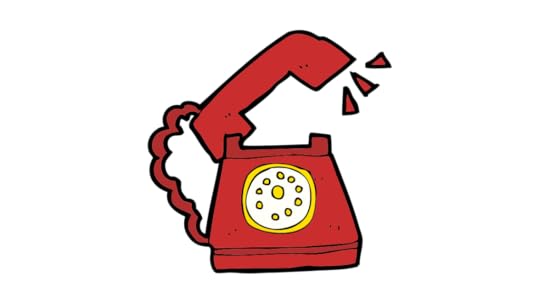
The Economics of Attention
Shouting louder isn’t the key to being heard
In 1971, Herbert Simon, a professor at
Carnegie-Mellon University and a future Nobel Prize winner in economics, wrote
a prescient description of the upcoming information revolution and the impact
that the ready availability of seemingly endless quantities of information
would have on our ability to process and use it. Although Simon wasn’t
specifically addressing the selling and buying of products and services, the
conclusions he drew apply to today’s sales environment.
The following is a quote from a paper Simon
published in 1971:
“In an
information-rich world, the wealth of information means a dearth of something
else: a scarcity of whatever it is that information consumes. What information
consumes is rather obvious: it consumes the attention of its recipients. Hence
a wealth of information creates a
poverty of attention and a need to allocate that attention efficiently
among the overabundance of information sources that might consume it.” (Simon, H. A.
(1971), “Designing Organizations for an Information-Rich World”, in
Martin Greenberger, Computers, Communication, and
the Public Interest, Baltimore, MD: The Johns
Hopkins Press,ISBN
0-8018-1135-X. pp 40-41)
What Simon was describing was a situation based
on the laws of economics—namely, that the supply of any commodity, in this case
the attention span of any consumer of information, is limited, and that market
forces will efficiently allocate that scarce resource among the various
interests competing for it.
Let’s apply Simon’s lesson to the selling
environment. Your prospects and customers are, by definition, consumers of
information. They seek information from different sources, such as the
Internet, social media, and salespeople, in order to make fully informed decisions
about purchasing the right products and services for their needs. However, as
Simon pointed out, prospects and customers have a limited supply of attention
to divide among the information sources requesting a piece of it. At some point
during their buying process, they have to decide how to allocate their
attention to vendors, administrative tasks, management responsibilities,
meetings, making phone calls, returning emails, updating their Facebook status,
and texting with their spouse, kids, and friends.
Your prospects and customers make an economic
decision about how to prioritize the allocation of their attention bandwidth.
Sellers that provide the greatest return to the prospect on the time invested
in them will be given more time to sell the prospect. In other words, sellers
that create value for the prospect and customer just by not wasting their time will have the inside track. And sellers that
waste the prospect’s time will not get responses to their emails and voice
mails.
In my book, Zero-Time Selling, 10 Essential Steps to Accelerate Every Company’s Sales, I discuss how your prospects calculate an economic return on the time they invest in you as a seller. I call this the Return on Time Invested (ROTI.) Your prospects judge every sales interaction they have with you by whether it provides value. If you waste the precious minutes of attention the prospect has allocated to you, then they will make the perfectly rational decision to invest their time with another seller. Again, are you wondering why your prospects aren’t listening to you? Now you know.
How can you effectively cut through the welter
of information your prospects confront and become an asset instead of a
liability on their attention balance sheet? The key is to Sell with Maximum
Impact in the Least Time (MILT) . Selling with MILT requires you to be
. Selling with MILT requires you to be
responsive. In sales, responsiveness is the combination of information content
and speed. Quickly provide all of the information the prospect needs to make an
informed purchase decision with the least investment of their attention
(otherwise known as “time”) and you will be rewarded with all the
time you need to make your case. Help your prospect get their job done more
quickly and they will allocate more of their limited attention to you because
they have learned that you provide a better value and enhanced return on the
investment of their time than your competitors do.
Selling with MILT requires planning. Each
interaction with a prospect has to create value for them. Whether it is a phone
call, email, text, video chat, or sales call, planning for the next prospect
interaction has to answer the question: what information does the prospect need
from us today, or what questions do they need answered today, to move to the
next step in their buying process?
Increase your prospect’s ROTI by ruthlessly
eliminating the time-wasting “check-in” and “touching base”
calls from your sales repertoire. e sure to also eliminate the “get
backs” from your selling. (“That’s
a great question, Mr. Prospect. Unfortunately I don’t know the answer and I’ll
have to get back to you with that
information.”) Make absolutely certain that the person talking to your
prospect can answer whatever question arises.
Use the Economics of Attention to your
advantage. And keep in mind that the ROTI is a two-way street. Maximize the
prospect’s return on the time they invest with you and you’ll earn the maximum
return, in the form of orders, on the time you invest in them.
Key Takeaway: Sell with the Maximum Impact in the Least Time (MILT) to maximize your customer’s ROTI.
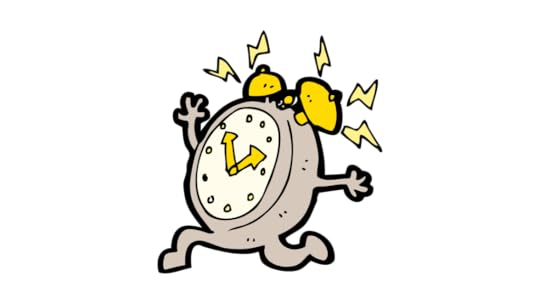
Are You Worth Your Prospect’s Time?
Very
early in my sales career I made a cold call on the CEO of a large homebuilder
in my territory. I was selling accounting systems for what was at the time one
of the larger computer companies. I was freshly trained in sales and computers,
a newly minted sales rep ready to go out and conquer. Shoes shined and red
power-tie straightened, I marched into the lobby and asked the receptionist to
see the CEO. I fully expected to be rebuffed. so I was completely taken aback
when the CEO, Bill, came into the lobby, shook my hand. and escorted me back to
his office.
Bill
was very polite and completely old-school, even for that time. Silver hair,
nice tan, expensive 3-piece suit. He took me into his office, which was empty
except for his massive wooden desk with a phone on it. He motioned for me to
sit down opposite him. Bill asked for my business card. I reached over the
aircraft carrier-sized surface of the desk and handed him my card. He took it,
slowly turning it in his hands, examining it back and front, and laid it on the
desk in front of him. “So, young man, what can I do for you?”
I
took a deep breath and launched into my pitch. Just as I had been trained to
do. Bill let me talk for about a minute or two and then raised his hand for me
to stop. He opened a drawer in his desk and pulled out a stack of business
cards bound with a rubber band that was literally two inches high. “These
are all the computer salespeople that have been by my office in the last
year.” He spread the cards across the top of his desk. There were cards
from nearly every sales rep in my company, as well as those of every competitor
I could think of. “Tell me, how are you different or better than any of
those folks?”
The
answer was…that I wasn’t. Yet.
Give your prospect a reason to buy
I learned later that
Bill talked to nearly 50 salespeople just like me every year. Outwardly there
was no question that his firm would benefit from upgrading its computer and
accounting systems. Bill knew that and had simplified the task for every
salesperson, giving each one an opportunity to speak to him directly. There
were no layers to go through, no BANT qualification to process because they
were talking to the ultimate decision-maker. And yet, no seller had ever gotten
past the first call with Bill.
Why?
Because Bill was waiting for someone to give him a reason to buy. That reason
was not going to be a new feature or its associated benefits. He was patiently
waiting for a salesperson to create some value for him by providing a simple,
cogent reason for him to invest his time and money in a new system. In short,
he was waiting for a salesperson to step up and differentiate his products from
the rest.
The
lesson Bill taught me continues to grow in relevance for salespeople, both new
and experienced. Today more than ever, how you sell is as important as what you
sell to create value, build trust, and differentiate yourself from your
competition. It isn’t enough to show up at a prospect’s office or on a sales
call and expect the buyer to fall in love with your product or service solely
based on its features and benefits. It also isn’t just about playing the
numbers game. You could make a million cold calls, but if you don’t give the
prospect something of value, something that provides them with a return on the time
they invested in you, then you are never going to earn their business.
Ask yourself a simple question
Before
every prospecting call, sales call, or existing account review, ask yourself:
What value are you creating for the buyer? What content are you providing that
will enable them to move further along in their buying process and perceive
that the time invested in you was time well spent?
In
the formative years of my career there weren’t as many resources available as
there are today for salespeople to research industries, companies, and
individuals, and to develop a better understanding of your prospect’s
requirements for the products and services you sell. We didn’t have access to
an Internet full of white papers, articles, and blogs to help prospects make
more informed purchase decisions in a shorter time. (There were no power
outlets on the covered wagons and no Wi-Fi on the Oregon Trail.)
The
approach I took to creating value on a first call was to tell stories that
illustrated how customers were using our products how our products provided the
unique value they needed. Simple stories
helped my prospects envision how they too would benefit by using our products.
By using their time wisely I earned the right to more of their time.
A
little over a year and more than 50 salespeople later, I went to see Bill
again. I was a bit wiser and more experienced. We started all over again. But
this time with a different conclusion.
“Please Don’t Make Me Repeat Myself”
An inescapable fact of selling is the inelasticity
of the time available to your prospects and customers to perform their jobs.
They are trying to increase their productivity and accomplish more in their
business, with the same number of poeple, or fewer, and fewer resources. Just
like every company out there.

Of course, the same applies to your company and your business. If you are tasked to sell more with the same resources, then time becomes the most precious commodity you have. Right? If you are given a higher quota and you divide that number by the number in that song from the musical Rent (“five hundred twenty five thousand six hundred minutes. How do you measure, measure a year…”) it means that you have to sell more dollars per minute this year to meet your objectives. You don’t have time to waste. And your customers don’t have time to waste.
It is important to examine each sales
opportunity you are currently working to determine if you are: (a) consuming
too much of the prospect’s time; and thereby (b) decreasing your chances of
winning their business. These two go hand in hand.
Here is a simple metric you should use to
determine if you are frittering away the prospect’s time (and with it any
potential order.) Answer this question: How many times has your prospect had to
tell you their story? Their story includes their requirements, their budget,
their timeframes, their decision-making process, and whatever other background
information you need to support them through the buying process.
The more times a prospect is forced to tell you
their story, the less likely you are to win their business.
If you make your prospects tell you their story
more than once, then it means one or more of the following time-wasting
symptoms are present in your selling:
1. You’re not
listening to the customer. How can you be responsive to the customer and
provide them the information they need if you aren’t listening and documenting
what they are telling you?
2. You’re too
dependent on others to sell. This means that your salespeople don’t have
enough knowledge and expertise about your products or your prospects’
industry. Each new person that is
brought into an account invariably wants to hear the customer’s story with their
own ears.
3. Your
salespeople are too reliant on management to win the sale. It is my
experience, both as a salesperson and sales manager, that if you introduce a
sales manager into a sales situation the first thing he or she will do is ask
the prospect to their story. The manager does this because he or she doesn’t
really trust the version provided by the salesperson.
Keep in mind that your prospects want to make
informed purchase decisions with the smallest investment of their time
possible. Forcing them to repeat their story to multiple people from the same
company wastes time that they could be spending on other productive activities
and will lead them to conclude that working with your company would not be
efficient or wise.
Key Takeaway:
Don’t make your customer repeat himself.
One last point. If you are wasting the
customer’s time you are also reducing your own sales productivity. Spend too
much time with one customer and you’ll have less time to spend with other
prospects and customers.
The post Time Really Is Money Managing Your Customers’ Time To Win More Orders appeared first on Andy Paul.
December 19, 2019
Sales Management

A sales manager at the helm of a sales team has the
responsibility not only to manage the definition and implementation of
effective sales processes but must also provide the leadership and coaching his
or her sales team requires to effectively utilize the sales processes to
achieve and exceed their goals. This blend of strategic and tactical skills is
not easy to achieve. Sales Managers often are more comfortable with one aspect
of their sales process leaving them to neglect others. That is human nature.
Being aware of the five classic pitfalls nearly all sales
managers experience at one time or another will help you avoid unnecessary
setbacks and smooth your path to sales growth.
1. Protecting the Status Quo
As important as a sales process is, a slavish adherence to the
status quo is the first step on the road to failure. Generally, as a sales team
is developing, a great deal of attention is focused on creating the structure
for sales activity and sales growth. Managers make the mistake of assuming that
once their sales process is in place that they can solely focus their efforts
on tactical sales management. The problem is that elements of your sales
process may not be a perfect match for your target market or for the
individuals you have on your sales team. As a sales manager you must pay
constant attention to your sales process to ensure that it is always supporting
and not impeding, your sales efforts and take immediate steps to revitalize it
when it has become outdated or stale.
2. Losing the Urgency
A second pitfall sales managers have to confront is losing their
sense of urgency. This is not to say they become complacent. Rather they don’t
act and manage with the requisite responsiveness. Prospects and customers have
questions and want answers in Zero-Time in order to make informed purchase
decisions in the shortest time possible. Neglecting to reinforce this urgency
within your sales process and your sales team will inevitably lead to a
decrease in responsiveness and, ultimately, orders. In sales, everything is
urgent or needs to be. As a sales manager, if you aren’t maintaining this
attitude of immediacy in all that you do, you risk failure.
3. Failing to Measure
Neglecting to establish metrics for key processes and
overlooking the necessity of regularly measuring how the processes are
performing is a common oversight that negatively affects sales productivity. A
sales process is not an abstract concept but a discrete set of required steps
to achieve a certain goal within a certain period of time. As a sales manager
you must continuously measure the outcomes of your core sales processes and
take the necessary steps to refine them and make them even more productive.
4. Providing Incomplete Training
Sales managers often fall into the habit of providing limited
training for their sales team. They focus on isolated skills and product
training to the exclusion of integrated sales training that teaches how to
deploy their skills and knowledge within their sales processes to win customer
orders. Sales people have to be trained on their processes as deeply as on
their sales skills and product knowledge. Ignoring this training is akin to
putting 11 football players on the playing field and telling them to just
improvise plays and do whatever they please.
5. Swimming with Minnows
Too many sales managers keep chronically underperforming sales
people onboard well past their expiration date. You don’t want to keep swimming
with minnows when you need to be cruising with orcas to make your numbers. If
you have salespeople who aren’t suited to sell your product or service then
every minute you keep them is a minute too long. It is a myth that good
salespeople can sell anything. To ensure the growth of your company,
salespeople must have experience and skills that will enable them to be
completely responsive to the information requirements of their prospects in
Zero-Time. If they don’t, they must go. Period.
It has never been easy to be a sales manager. However, if you
can avoid these common missteps then you, your team, and your company will all
benefit.

Before You Can “Fix” Your Sales, Master The Fundamentals
In the hierarchy of things that you can do to improve your sales
performance, there are both simple and complex solutions. Depending on your
company’s particular situation, both the simple and the complex solution could
provide value to your organization. They are not mutually exclusive. The
question is: what should you do first?
The difficulty with sales problems is that they can be hard to
diagnose and solve. There are lots of interlocking pieces to the sales puzzle,
and the temptation is to assume that hard problems require complex and
expensive solutions. Therefore, depending on your company’s size and resources,
this could mean that your most pressing sales problem doesn’t get addressed
because there is no budget or that a large investment is made to implement a
new selling process and train your entire sales force how to sell to that
model.
My experience has shown that a company with ample resources will
typically default to the complex solution because CEOs and sales managers make
the often faulty assumption that the simple solutions are already in place. A
company with more limited resources will also tend to overlook the simple
solutions to their sales problems because they have been conditioned to believe
that the only answer to a hard problem costs money. If they search online they
will find a parade of reputable sales training and consulting firms promoting
selling systems that promise to fix their sales problems. But those approaches
often require a substantial investment of money over a substantial period of
time.
However, irrespective of company size, if management were to
investigate and do a little digging they will usually find that the fundamental
disciplines every company needs to flawlessly execute their sales plan, and
that they believed were in place, have either faded due to management
inattention or never existed to begin with. They assumed that all sales leads
were promptly being followed up. They assumed that all salespeople were being
responsive to their prospects and customers in zero-time with the information
and answers to the questions they need to move forward in the buying process.
They assumed that customers were receiving the level of unconditional support
required to turn them into loyal repeat customers. They assumed that their
frontline salespeople knew their products inside and out, or at least better
than their customers did. Well, we all know what happens when you assume.
As with any investment, the dollars invested in new selling
systems and sales training involve a certain element of risk. You can’t
precisely predict the outcome although the potential payoff of improved sales
productivity, over an extended period of time, can be large as well. So,
imagine a company’s surprise when, after they have invested in an expensive new
selling system. modified their sales model and re-trained their entire sales
team, they determine that they are experiencing the same sales problems as
before.
The fault doesn’t lie with the new selling system. The problem
is that the company is trying to build a new sales house on a shaky foundation.
The biggest return on the dollars you invest in your sales team will come from
ensuring that you are mastering the fundamental sales disciplines ( and
incorporating those into your daily routines. Before you embark on an upgrade
program do the simple things first. Then take the next step to renovate and
upgrade your sales house.

What’s Your #1 Priority?
If you’re a sales manager and your number one priority each and
every day is something other than coaching the individuals on your sales team
to improve their sales productivity then what are you doing? Whatever it is,
put it on hold and take care of your priorities.
The term coaching is in vogue these days. Much has been written
about the importance of sales managers becoming coaches for their team. Studies
have been cited that claim that it is the single most important thing you can
do. A commonly cited statistic is that a 19% improvement in sales productivity
is to be expected with effective coaching. To which my response is an
old-fashioned “Duh.”
The fact is that coaching is nothing more than disciplined sales
management. There is no distinction between the two. I attended a conference
recently where consultants talked about how they were hired to coach front line
sales reps in companies with sales managers in place. The claim was that sales
managers had too many other responsibilities and no time to coach their direct
reports. I don’t buy it.
If you’re a CEO, there should only be two reasons why a 3rd
party consultant should be providing coaching to your frontline sales team:
1. Your sales managers are inexperienced and don’t know how to
effectively coach. That is okay. New sales managers need to be trained. They
don’t arrive in their first sales management assignment fully formed and ready
to effectively function as a manager any more than newborn babies are born
ready to memorize and recite Shakespeare. But, if this is the case, then train
your sales managers. If can’t do it yourself, then hire that consultant to
coach your manager, but never your sales team. Teach your managers how to be
effective sales coaches. And, if they are unable to do that then…
2. Your sales managers are in the wrong job. You need to find
someone new who is capable of performing the hard work that comes with being an
effective sales manager.

What should a sales manager do to be an effective coach?
A. Make certain that each member of
your team fully understands the playbook.
In this instance the playbook means the sales team is thoroughly
trained to know the answers to the “what” and “how”
questions. What are they selling and how are they selling it? Sales reps need
training in the sales processes you use as much as in the products you sell.
B. Work with each member of your
the team to develop an individualized sales plan.
The sales plan is simply composed of the objectives, strategies
and tactics that the individual sales rep is going to employ to achieve their
assigned goals. People gravitate towards sales as a career because it gives
them a sense of being in control of their own destiny. But they aren’t going to
find their destiny without a road map. The effective coach makes sure their
reps understand what each day, week and month holds in store.
C. Set expectations not only by
your words, but also by your actions.
This is not about achieving the number but about the process and
what it takes to mold someone into a high-functioning, self-sufficient
salesperson. Sales is a craft. Learning how to successfully do it is an
apprenticeship. The most successful salespeople I know learned their trade by
watching their managers at work and integrating the skills and techniques they
observed into their own daily selling routines. An effective coach has to be
able to demonstrate the skills they are teaching.
D. Get down into the nitty-gritty.
This means conducting regular detailed reviews of every deal
your reps are working, supplying the strategic and tactical coaching to move
deals along, as well as providing the wisdom, guidance and counsel a rep needs
to motivate them to persevere when the going gets tough. It means understanding
the details of your teams’ deal so you can provide day-to-day guidance to
ensure that opportunities are continuing to move forward.
E. Develop a strong level of trust
with your team members.
How does that trust get established? By being openly invested in
each rep’s success to the same degree that they are. This is a tough standard
for sales managers to meet. But the great sales managers are all able to make
it happen. Read interviews with players from great sports teams that have won
championships and the common attribute they cite for their success is the
high-level of trust that the teammates had in each other. In short, they had
each other’s back. Have your team’s back.
My first sales manager was Ray. Ray was the most no-nonsense
manager I have ever encountered. (My hiring interview with Ray lasted 2 minutes
and he said all of 12 words. But that is a story for another day.) It was
primarily through his coaching that how I first learned how to sell (and be a
sales manager.) Everyday we sat down and reviewed each of the deals I was
working on. He taught me how important it was to not waste a minute, hour or a
day if I was stuck on a deal and needed advice to see what I needed to do next.
I remember coming into the office one morning when I was in the midst of a
month-long sales slump and Ray was standing by his desk with his jacket on and
car keys to his big red Oldsmobile jangling in his hand. “C’mon,” he
said. Let’s go make some calls.” We’d spend the morning talking to
prospects. Sometimes I’d take the lead and sometimes Ray would take the lead.
But I would always come back from those calls smarter about selling and
motivated to knock it out of the park.
Being an effective coach means nurturing the success of the
people who work for you. At the end of the day, that is the highest success a
sales manager can achieve. If you’re a sales manager, and you’re not coaching,
what the heck are you doing?

Surplus is at the Root of Discounting.
It is easy to blame the salespeople for rampant discounting but
it has always been my experience that the primary responsibility for
over-zealous discounting and the resulting price and margin erosion rests with
management.
When a manager has a surplus, whether of inventory or of
salespeople not hitting their numbers (meaning that he or she isn’t hitting
their number either), they look for a solution in the form of a discount.
Approach the end of the month or quarter with too much inventory on the shelves
or too many people not hitting their quota, and the first thing many managers
do is authorize their salespeople to offer a discount to a customer to win an
order and move some product.
All parties involved in a sales transaction, buyer and seller,
are familiar with this cause and effect scenario. Salespeople wait for it.
Customers wait for it. It is not an accident that the trajectory of orders
during a quarter traces the familiar hockey stick shape. Everyone is familiar
with the rules and is in on the game.
The problem with this end of period discounting is that these
“one-time” discounts have a tendency to morph into the new default
price point for your customer. If you’re handing out discounts at the end of a
quarter to induce customers to close an order or accelerate a delivery, then
your next order from that customer is going to be at the new price point you
established with the discount. Balk at that and you’ll find that all your
orders from customers will start to materialize around the end of your accounting
periods.
Surplus is also a key factor in discounting conducted by
salespeople. It occurs because salespeople oversell their product or service,
in effect offering more features than what the prospect needs to meet their
needs. This overselling occurs when salespeople are not adept at precisely
qualifying their prospect’s exact requirements. A salesperson can’t sell value
if they don’t understand the problem the customer is trying to solve. As a
consequence, they tend to sell the entire feature set of their product or
service in the hope of encompassing the prospect’s needs in the process.
When a salesperson’s offer exceeds the needs of the customer
they are left with the choice of reducing either the scope of their offer or
their price in an attempt to win the order. Offering surplus features that are
without value to the customer almost always leads to a discount.
As a manager, to effectively address this discounting problem
you need to develop a plan to reduce the surplus factors in your selling. First,
the answer for salespeople who oversell is ongoing in-depth product training.
Learning to sell value is next to impossible without a true understanding of
your product or service. A rule of thumb is that a salesperson can’t
effectively sell value if they don’t understand their product better than the
prospect. Does your training accomplish that?
The second surplus factor to manage is the end-of-quarter
discounting syndrome. This is a hard habit for management to break.
Unfortunately going cold-turkey is the only effective method to curtail the
practice. It could take one or two
challenging quarters to flush the temptation out of your system and re-train
your salespeople, prospects and customers. However, you will learn which
customers are buying your product for the value versus the discount. These are
the customers to focus on in the future.
There is a lot of talking and blogging going on about cold
calling and whether it is a necessary or even desired part of the sales mix. I
can’t resist putting in my two cents on this discussion.
I have recently seen a couple of studies and listened to some
presentations about the changes taking place in how sellers and buyers are
interacting that are worth considering as we leap into the fray. In general,
the trends discussed are reflected in the 2010 DemandGen
and Genius.com study titled “Inside the Mind of
the B2B Buyer.”One of their key findings was that more than 80% of B2B
customers/buyers said that on their transactions that they had initiated
contact with the seller. Only 10% said that they were contacted cold by the
seller.
Personally I’m not convinced that the 80%, is an accurate
reflection of the sales situation today. But that is really beside the point.
The key takeaway is that it is an indicator of how your customer’s perception
of the role of sellers has changed and how the actual role of sales is
continuing to evolve at a rapid pace. The Internet and social media have
irrevocably transformed how conversations with some significant fraction of
your prospects are initiated. And, even if you, as a seller, initiate contact
with a prospect, chances are high they are going to possess some level of
pre-education and pre-qualification on your product and service on that first
call (or they are going to acquire it by browsing your website while on the
phone with you.)
What does this mean for cold calling? In an ideal world, cold
calling wouldn’t be necessary. In our fantasy, marketing departments would
prove capable of generating well-targeted (or “sales worthy” to
borrow a term from my friend Nancy Nardin) in-bound sales leads in such
large quantities, week after week, month after month, that all available sales
time would be consumed with responsive follow-up. Wouldn’t it be great if the
world were handed to you on a silver platter like that?
Unfortunately, that dreamy ideal world doesn’t exist for most
companies. Using the figure from above as an example, even if you meet 80% of
your sales goal today from prospects that originated as sales worthy in-bound
sales leads, where will you find the remaining 20%? You will find them from
proactive prospecting (i.e., cold calling.)
If you’re in Sales your job boils down to this: doing the hard
work required to meet your goals. Whenever there is a gap between in your
pipeline between the number of qualified prospect your need to meet reliably
meet your goal and the number of qualified prospects in your pipeline generated
from in-bound sales lead conversions, and there will almost always be one, it
has to be filled in by prospect activity generated by you. This means
fulfilling your responsibility as a salesperson to do what you have to do in
order to meet and exceed your assigned goal. If this means spending a portion
of every day following a disciplined prospecting process (i.e., doing some
research to pick targets, making connections online, getting on the phone or
going out and making calls) then that is what has to be done.
In my first professional sales job out of college, in the
pre-Internet dark ages, I was selling big computers. Everyday involved getting
kicked out of the office at 8am and venturing out to make cold calls out in my
territory. I have to admit it didn’t come naturally to me. So I developed
another approach. I hit upon a system of hosting a seminar in our branch office
every Wednesday afternoon at 4pm during which I would demonstrate our system. I
used business directories to research names of potential prospects in my
territory and mailed out 10 postcards with a hand-written invitation every
Thursday. I’d follow up with everyone on the following Monday morning and again
on the morning of the seminar. Usually I’d end up with one or two attendees
each week. Within months I had a strong, constantly renewing pipeline and was
killing my numbers. After a couple years, I was getting two thirds of my
business from existing accounts and referrals. But every Thursday, I was still
sending out 10 postcards and every Wednesday I was playing host to new
prospects.
No matter how many leads you receive, cold calling, or proactive
prospecting, remains a necessity for most salespeople and most sales teams.
Clearly the amount of time a salesperson has to devote to cold calling could
shrink as increasing numbers of prospects pre-educate themselves online and
initiate connections with potential vendors. But the role sales prospecting
plays in building a strong pipeline of qualified prospects to ensure that you
make your numbers is will never go away completely.
Sometimes you just gotta do what you gotta do.
I read a blog posting recently about what a salesperson could do
to increase sales. The title was something catchy like “A Billion and One Tips to Increase Sales.” It was hard
to argue with the premise of the post. Everyone in sales can use good advice on
increasing sales. It’s the reason I continue to read everything I can about
sales. There is always something new to learn.
In this case, this author’s useful quick tips were all about
creating more sales activity. He was asking the question ‘What should you do if
you have prospects but they aren’t moving forward fast enough?’ and providing
answers that were designed to create a flurry of sales activity around
prospects to stimulate them to engage and move forward with the seller.
But is selling the same as sales activity? And, if a prospect is
not yet fully committed to the buying process, is random sales activity the way
to get them engaged?
Nothing is sometimes better than something
I had a salesperson, named Arte, working for me once who had
confused activity with selling. He came into my office one day and told me that
he had invented his own method of selling that he called SWARM. The acronym
stood for Surround With Activity to Regain Momentum. His thought was to envelop
his prospects in a constant swarm of sales activities such as of phone calls,
visits, emails, voice messages, invitations to webinars and seminars, product
demonstrations in the hope that eventually something would stick and the
prospect would relent and engage.
How’d that work for Arte? Not so well. But he got high marks for
creativity.
Unfortunately, similar to Arte, many salespeople fall into the
trap of believing that doing something, anything, with a prospect is better
than doing nothing. This happens all the time when the prospect has gone radio
silent. There are lots of reasons why this occurs and it is the job of the
salesperson to determine the answer and respond appropriately and with content
that has value for the prospect. But rarely is the correct response to bombard
the prospect with trivial, time-wasting requests and interactions.
Keep in mind the customer’s objective
In a sales situation, or buying situation, it is important to
keep in mind that the goal of the customer is to gather the information or data
they need to make an informed purchase decision with the least investment of
their time possible. This is not to say that customers won’t spend the
appropriate time to purchase a product or service. This just means that they
won’t spend a minute more than they have to.
Create and deliver value each time you talk to your prospects and customers
If you are selling you should only be taking actions with a
customer that have a defined purpose, deliver clear value and support the
customer’s goal. To that end, instead of unthinkingly reaching out to the
customer and demanding some of his or her time with a trivial request, consider
the opposite approach: make sure that every interaction you have with a
prospect or customer achieves Maximum Impact in the Least Time (MILT) possible.
It requires planning and thought to make certain that each time you interact
with the prospect or customer you are providing information that will bring
them closer to their goal of making an informed decision. But the result is
that you will bring value to the customer through your selling. If you want a
customer to engage, create value for them by your actions. Wasting their
limited time with “sales activities” does the opposite.
Selling has a purpose. It is not the goal of your prospects or
customers to spend time with you. In fact, the opposite is true. They want to
accomplish their job, which is to buy a product or service, while spending as
little time with the salesperson as possible. The winning salesperson will
usually be the one who knows how to make that happen.
Which is more important in selling: Process or selling skills?
This is one of the classic debates about sales and selling. It
is very similar to the ‘nature vs. nurture’ debates that young adults
without kids and too much time on their hands indulge in. (Anyone with kids
quickly learns the answer to this…)
The answer is that both process and skill are required to succeed in
sales. However, process provides the platform for skills to flourish.
What Would Michael Do?
Take the case of an elite athlete like Michael Phelps, the world
champion swimmer. Michael Phelps trains like a demon, spending hours face down
in a pool every day, to showcase his skills on the world’s biggest stage, the
Olympics. He won an unprecedented 8 gold medals in swimming at the Beijing
Games in 2008. There is no doubting his obvious skills. Having conquered the
world once, the question was would he return to the London games in 2012 and
try again?
In preparation for the Beijing Olympics, Michael followed the
training regimen put together by his coach, Bob Bowman. It was a process that
focused on the quality of the daily work Michael did in preparation for
competition. Every workout he swam and the details of how he performed in that
workout, every weightlifting session, every cross-training session were
meticulously recorded, tracked and analyzed. Bowman and Phelps knew that the
most accurate predictor of how Michael would perform in the big competitions
was the data collected about his daily training process over the previous
months and years.
The Day-to-Day Process
This is similar to selling. How you execute your sales process
on a day-to-day basis will be the most accurate predictor of whether you will
win orders and meet your objectives. An effective and disciplined sales process
can do for you what it does for Michael Phelps. If you work hard, it will put
you in a position to compete for and win orders. It is how well you execute the
basic sales activities that comprise the steps of your process, and how often,
that will ultimately lead to the order.
As he began his preparations for the London Olympics
Phelps strayed from the process that had led him to the podium eight times in
Beijing. And, with all the skills in the world, his results in competition
suffered. He was losing to swimmers that previously couldn’t compare to him.
What did he do? He redoubled his commitment to the process laid out by his
coach. He might have rebelled against the process but he returned to it because
he knew that if he invested his hard work into it results would follow.
Listen to Michael Phelps being interviewed after a competition
today and he defaults to talking about his process. The race result might now
have been a first place finish but he will talk about how well his training is
going instead. His focus is on how is he performing each day in each step of
his training process. He knows that if he executes his process he’ll put
himself in the position to achieve the results he expects.
In the same way sales process can provide a much clearer
snapshot of potential sales than simply looking at your pipeline of prospects.
Well-defined sales processes provide a method to continually assess and measure
the underlying sales activities that will lead to orders. Using metrics to
continually measure and fine-tune sales processes, just as Bob Bowman did with
Phelps’ training regimen, leads to improved outcomes for salespeople of all
skill levels.
Your Process Enhances Your Skills
I had a client where one of the more senior salespeople, a
grizzled sales professional, Ollie, was determined to resist management’s
efforts to implement some fundamental and essential sales processes to respond
to a changing sales environment. Ollie had always managed his sales territory
his own way and while he possessed great sales skills and experience he was
floundering. He found himself at odds with evolving prospect and customer
expectations for salespeople in terms of responsiveness, follow-up, content
delivery and service.
The processes that Ollie’s management implemented saved his
sales career by requiring Ollie to become more responsive, more proactive and
timely in follow-up, more knowledgeable of the products he sold, more conscious
of eliminating time-wasting sales calls and making every customer interaction
achieve the maximum impact in the least time possible in order to compress
buying cycles.
This does not mean that a salesperson should ignore the skill
components of selling. We should always be working to improve our sales skills
no matter how much experience we have. But sales skills need to be utilized in
support of defined sales process to create the most value for the customer. And
the salesperson.
Why are your sales so slow? I’m not referring to your order
rate. I am talking about the activities and processes that have to be happening
in Zero-Time in order for you to achieve your sales goals. One thing leads to
another and if you are running in place in February, you’ll be running to catch
up by March and hopelessly behind by June.
Here we are, still near the beginning of a new year, when hopes
for the next twelve months should be running high. And your selling efforts
feel like they are stuck in the thick mud. Just like they were last year. This
is not the way to kick off what should be your most successful sales year ever.
Everyone has a reason or an excuse for slow selling. Believe me,
we have all been in a situation where you question your sales manager about why
it is taking so long to move a customer along in their buying cycle, and they
don’t have an answer that makes sense. Or any answer at all.
I ask all my new clients to identify the reason, or reasons, why
they are not growing, why their sales efforts are stuck in neutral. The
responses I receive are typically all of a piece. As CEOs they can identify the
symptoms but not the causes of the problem. But as CEOs and sales managers of
SMBs you can’t be a doctor who can only diagnose the symptoms of the illness
without prescribing a cure.
I group the symptoms of sales lethargy into the S-L-O-W acronym.
S is for Status Quo.
Too many companies are just coasting along. The CEOs are not
really satisfied with their results but they are too worried about making any
changes that could rock the boat and potentially jeopardize the sales they do
manage to capture. Maintaining the status quo is not a way to thrive.
“Status Quo is ancient
Greek for ‘slow death.'”
Folks, say hi to Milt again. (To learn more about Milt, check
out my book, Zero-Time Selling,
or this previous blog post. )
“Hey.”
Actually, Milt, Status Quo is not Greek. It is Latin for “the
current state of affairs.” But when an SMB’s sales are stuck, maintaining
the status quo is the same as slowly dying.
“As I said.”
L is for Lack of Urgency.
In today’s economy you can’t expect the customer to operate on
your schedule. The timeframe for every sales action has to be immediate.
Customers do a lot of online research on your product before they ever call you
and when they do they are single-mindedly looking for answers to their
questions. The first seller with the complete answers wins.
O is for Outdated sales practices.
Unfortunately many SMBs still operate their sales teams like it
is 1912 not 2012. Their only concessions to the 21st century are a website and
email.
“What would you call
my pager?”
Google d-i-n-o-s-a-u-r.
Your customer and their buying behavior have been irrevocably
altered by technology over the past 15-20 years. And if your sales practices
and sales methods haven’t changed in concert with your customer then you can’t
expect to effectively compete for their business against competitors who have
evolved.
“Google
N-E-A-N-D-E-R-T-H-A-L?”
W is for Weak sales management.
I don’t like to point fingers.
“But you will.”
SLOW starts at the top.
Even a highly self-motivated sales person will find it hard to
succeed in company where the status quo rules, where everyone’s motor revs at a
slower idle and where the sales systems and processes were obsolete before the
turn of the century. A successful sales culture begins and ends with
management. The CEO and sales management have to commit to change and urgency.
Make a change today to get your sales going!
Now, as you move further from the old sales year and deeper into
the new sales year, now is the time to evaluate what you can do to shake things
up, to change the routines your sales team have followed year after year. Break
some of your bad old habits and reach a level of sales success that you haven’t
achieved before.
Here are THREE tips you can put to use today. These are not
permanent fixes. Or suggestions for how to comprehensively revamp your sales
efforts. There are just small ideas you can put to use TODAY that can begin to
make a difference and break you out of the SLOW mold. It doesn’t matter which
one you choose. Just choose one of the following steps and put it into play.
Make One Change Today.
Take a close look at your sales routines; your sales processes.
Tell each of your salespeople to choose just one customer facing activity and
change it. Now. Don’t just pay lip service to change. Do something about it.
This is not a change that requires a committee to plan and implement. I’m
advocating something much more simple than that. Just choose one aspect of your
day-to-day sales activity and change it. Simple.
Create a Metric.
Every aspect of your sales process is measurable. Do you have
metrics for each step of your selling process? Are you measuring how long it
takes to respond to your sales leads? Or how long it takes you to write a quote
and deliver it to a prospect or customer? Choose a single aspect of one sales
process and assign a metric to it. Then measure it today and again tomorrow.
Be Accountable.
Tell someone about the change you made or the metric you’re
tracking. Tell a colleague that you have undertaken to make a change in your
sales routine. Tell your boss which part of your sales process you have begun
to measure and what the goal is. When you tell someone else that you are making
a change they will be interested to learn if it is helping you. As a result
they will ask you how it is going. And you will need to have an answer for
them. Being accountable for change is a big motivator.
Sales Territories: What are they good for?
Every time a client asks me about the best way
to set up sales territories I instantly hear that old Edwin Starr song pop into
my head. I substitute “territories” for the word “war,”
which is a bit clumsy from a rhthym perspective, but I quickly get past that
and start singing “Territories, huh, Good God, y’all, what are they good
for? Absolutely nothing, Say it again.”
Do you still use sales territories? Do you
still assign your salespeople territories based on a geography or a certain
account type? Really?
Here a three good reasons to get rid of
geographic and account-based territories. (And, yes, I’ll answer your question
about what you should do instead below.)
Reason #1 is that assigned sales territories
are holding you back. If you’re a small business, this will be a familiar
scenario. Sales are not growing as you would like. You have 5 salespeople. One,
maybe two, of the salespeople have been with your company for a long time.
Perhaps since the beginning. Together they are your most productive salespeople
in terms of the dollar volume of orders they bring in. Together they are
managing the company’s biggest accounts and bring in the lion’s share of the
business.
Your other 3 salespeople are in spots that
tend to turn over every year or so. The people in those positions constantly
complain that they are unable to generate enough new business to meet the
quotas that are assigned. As the manager you dismiss their complaints and
assume that they are just not the right people for the job. So, you tend to
churn those sales positions in an effort to find more capable people to bring
on board. You ask yourself: how can I grow the business if I only have two
people who can bring in enough orders?
That leads us to reason #2: Assigned sales
territories turn your best new account salespeople into fat account managers. I
had a client where the number one salesperson accounted for nearly 50% of the
company’s sales each year. He had been with the company almost from the
beginning. Along with the founder of the company he had been responsible for
landing almost all of their early customers, many of which were still ordering
product from them. 10 years later he was still working those accounts and
grabbing up every lead that came in from them. The other 3 salespeople
struggled mightily each year to meet their goals. The CEO kept telling me,
“I need 3 more people like Jim.” I said the real problem was Jim.
“What?” You have taken your most accomplished new account sales
person, the one who went out when you were just starting up and landed all these
big accounts, and turned him into an account manager. Most of his job involves
picking up the phone and taking an order. Your best salesperson isn’t doing
anymore what he does better anyone else; developing new accounts.
The third reason to dump assigned sales
territories is that they encourage lazy sales behavior and increase sales
turnover. Think back to Jim. When he first started selling for his company,
when it was brand new, his charter was to go out and find business, no matter
where it was. He was opportunistic and entrpreneurial. But he isn’t anymore.
And he has such a large percentage of the available accounts that he is working
broadly with each account instead of deeply. He isn’t getting the most out of
each account. But his presence prevents anyone else from getting in the door.
Here are 3 simple fixes to permanently change
this situation. Not everyone will be happy at first, but in the long run it
will improve your overall sales.
1. At the end of each year, each salesperson
has to give up 30% of their accounts. At one client we set up a bidding
process, almost like the expansion draft that the NFL holds when they have
expansion teams joining the league. All the current teams have to designate 10
players out of their roster of 45 that are available to be drafted by the
expansion teams. Each salesperson had to put 30% of their accounts into the
pool. We put names in a hat and determined the order of people picking new
accounts. The only rule was you couldn’t select one of your own accounts. They
each got N picks. All accounts that were leftover went back to their original
owner. An amazing thing happened. The veterans started to go out and develop
new business. And they started working their accounts more effectively, going
deeper and broader then they were able to before. The other salespeople didn’t
pick up great accounts but they got accounts that had potential that hadn’t
been well served by the other salespeople. They picked up some confidence and
started doing a better job on new accounts.
2. If an existing account hasn’t ordered, or
been contacted, within the prior six month, then they become an open territory.
At one client I introduced a rule to break up account monopolies that strangled
overall sales. I said that if you hadn’t sold into an account within the prior
six months then any rep could call on them. You might think that chaos would
ensue but actually it was the opposite. The salesreps with all the established
accounts began to willingly shed those accounts that they couldn’t service. Of
course, they weren’t giving away their prime accounts. But they saw that unless
they freed up the time to really focus on their big accounts they were at risk
of losing them. I added a second change to the mix. If a lead, a sales inquiry,
comes in from an existing account that had not been contacted by the assigned
rep within the prior six months, then any sales person could take the lead.
Sparks flew. But orders started growing as accounts started getting more
attention.
3. All
new sales leads are available to any salesperson on a first come first served
basis. Without fixed sales territories salespeople should be free to compete
for leads. I believe that management should get out of the business of
assigning sales leads. I have never worked with a client where the CEO wasn’t
shepherding what he or she thought were the high value leads to his top
salesperson. When this system is implemented a few interesting things happen.
First, the salespeople who were hungry for leads had the opportunity to show
that they could perform. They showed up earlier in the office in order to get
their choice of leads. That was healthy. Without a CEO directing leads to his
favorites, it makes for equal opportunity
among all salespeople. Those people who had been complaining about the
lack of new leads might have had some justification. Under this system, their
excuses were removed and they had to put up or shut up. Second, salespeople had
an incentive to stay on top of, and truly work, their existing accounts. They
certainly didn’t want a stray lead to come in from another division of an
account that they were managing and have another salesperson scoop it up. But
mostly, the high performing salespeople largely got out of the business of
servicing new leads.
I got the idea for this system from my Uncle
Bill. I remember visiting Bill and his family in Iowa when I was very young. My
Aunt Martha was justly famous for her dark chocolate layer cake and on this one
visit after dessert was served there was one tempting slice of this delicious
cake remaining. All the kids around the table were eagerly eying the cake and
each other, gauging who was going to jump first. Finally I couldn’t take it and
I broke the silence and asked, “Who get’s it? Who gets that last piece?”
Uncle Bill slowly reached over and picked up the cake plate. While looking at
each of us kids in turn around the table, waiting for his decision, he leaned
over and licked the top of the cake with his big tongue from one end to the
other. “Me.”
The idea behind all three of these solutions
is to ensure that your entire salesforce is engaged on an equal footing in the
business of selling. Everyone is given a fair shot to succeed. This works to
the distinct benefit of the company as you create an opportunity for everyone
in sales to succeed to a greater degree. As long as you create an uneven
playing field you are dooming certain of your salespeople to failure. Why?
The post Sales Management appeared first on Andy Paul.
December 18, 2019
Provide the Human Touch
All in-bound phone calls to sales and customer support must be answered by a live person.
I want to see a show of hands from those of you reading this eBook. Raise your hand if you, when you’re a customer, enjoy using an automated phone system when you call a company looking for product information or support. Keep your hand up if you not only like talking to an auto-attendant, but also prefer an automated phone system over talking to a live human being. Anyone?
Is there anyone who really likes having to “Press 1 for English” and then “Please listen carefully as our selection of options has changed” and then maybe “Press 5 to hear these options again” because the description of which service is associated with which number is not really clear? You like playing hit-or-miss with the menu selections and then being put through to an extension where you get another voicemail message?
In fact, is there a reader who thinks having an auto-attendant provides a superior customer service experience for prospects and customers when they call a business?
I ask this question of C-level executives all the time. Virtually 100% agree that an auto-attendant provides a lousy customer service experience, that hate using it, and yet they use it in their own business.
I always ask a second question of the same people. How many orders have you lost in your efforts to save a few bucks by tossing out your receptionist? How many people hang up before their question is answered? How many calls to your sales department go unanswered?
The answer is always “I don’t know. I hadn’t thought of it in those terms.”
This means that
every time the phone rings in the sales and support department of your company
it is answered by a person, not a voicemail greeting, not an auto-attendant. It
means that you must have a receptionist or admin who is assigned to answer the
phones. And a back-up schedule to ensure that the phones are covered throughout
the business day.
Sure,
large companies have managed to succeed without receptionists. However, I would
argue that even they are missing sales opportunities by having all calls go to
an auto-attendant or straight to voicemail. In fact, capturing just a fraction
of those lost opportunities would more than pay for a receptionist.
Zero-Time
Selling means that everything happens in the shortest time possible. Zero-Time
Selling means that you win business by being more responsive than your
competition. And you can be completely responsive only if you answer the phone
and give customers the information they want.
If
a prospective customer calls in and an auto-attendant picks up the phone, then
the chances of that sales lead talking to a real person anytime soon are fairly
remote. In fact, the probability that your salesperson will even return the
phone call averages about 50%. That means you have taken a promising lead and reduced
its potential value by 50%. Or, looked at another way, you have reduced your
probability of getting that prospect’s business by 50%.
A Person Makes a Difference
Let’s
consider a customer’s experiences with two potential suppliers. The customer,
we’ll call it Petersen, Inc., calls Company A, Outbrook Corporation, looking
for more information about Outbrook’s product.
Okay,
back to Richardson, Inc. Their person assigned to make a purchase decision is
Alan. Alan has spent time researching Outbrook’s products online and has a
question for which he can’t find an answer. Alan calls Outbrook. An
auto-attendant answers the phone and tells him he has reached the Outbrook
Corporation. To reach a live person he has to go through a dial-by-name
directory. If he’s lucky, the auto-attendant will mention an extension for the
sales department. Of course, the salespeople know that, and as a result they
answer their phones about as often as a commercial airline flight arrives on
time. Alan finally figures out to enter the first three letters of Sales, S…A…L
and gets directed to Sal Belov’s extension. Unfortunately, Sal is in accounts
receivable, not in sales, and he transfers Alan back to the switchboard.
Finally, Alan gets put through to the sales line and he gets a voice message
sincerely assuring him that his call is extremely valuable to Outbrook: “Please
leave a detailed message at the tone and someone will return your call as soon
as possible.” Alan leaves a voice message, and is reasonably confident that he
will never hear back from Outbrook.
Alan
then calls Synchro, Inc., Outbrook’s competitor. On the third ring a pleasant
voice answers the phone. “Thank you for calling Synchro. How may I direct your
call?” So far so good. Alan says that he has a question about the Synchro
Model203B and would like to speak with someone in sales. The receptionist says,
“Thank you. I am putting you through to Karly Harmann, and she will be able to
help you.” Five seconds later the phone rings again. It is quickly answered by
Karly Harmann, who thanks Alan for his call and begins the sales process by
asking how she can help him. After 15 minutes Karly has answered all of the
prospect’s technical and business questions and scheduled a follow-on phone
call to do a Web demo of the Synchro Model203B.
Which
company is more likely to get the order from Richardson?
Several
important things happened here. First, Richardson began to experience how
different it would be to do business with Synchro than with Outbrook. The
instant availability of a salesperson to answer Alan’s questions created an
immediate positive impression of Synchro and their ability and willingness to
support him. This is immensely important in the buying cycle. One key step in a
prospect’s decision making process is a mental trial of your product and your
company. From your first encounter with a prospect, they are assessing how easy
it would be to work with your company.
Second,
Outbrook turned that first call into a customer experience that created value
for Richardson by immediately answering Alan’s questions. This response
dramatically increased their odds of winning the order. By answering phone
calls in person, and then answering questions in Zero Time, you set yourself
apart from your competition. You establish credibility with the customer and
create a standard of communication and responsiveness that all of your
competitors will have to live up to. Most important, you have shortened the
customer’s buying cycle and increased your odds of winning the order.
Red Flag Warning: Salespeople hide behind the phone system. They know that it serves as
a useful bulwark against unwanted calls from those annoying people and
companies that may actually want to purchase their company’s product! Companies
that route all in-bound calls through an auto-attendant and force potential
customers to hunt through a dial-by-name directory send a message to their
customers that they just aren’t that important to them. And they send a message
to their sales team that responsiveness and customer service aren’t important
either. If yours is a smaller enterprise, deciding to use an auto-attendant
will cost you more money in lost orders and customers than you could ever save.
Corollary #1: At least one salesperson must always be available to take calls from leads, prospects, and customers, even if the customer belongs to another salesperson.
“That really seems inefficient
to me.”
How
so?
“Why would a salesperson want
to field a call from another sales guy’s account? It’ll just irritate the
customer, who wants to talk to the same person he’s talked to before.”
To
the contrary. When prospects call, they want information, not to chat with your
salesperson. They want answers to their questions.
“Still, it seems inefficient.
The customer’s regular salesperson will still have to call the customer back.”
Not
if the customer gets the answers to his questions. This works to everyone’s
advantage—the customer’s, the salespeople’s, and the seller’s. All for one, one
for all.
“Now we’re Musketeers?”
But
without the hats.
Zero-Time
Selling demands that a customer or prospect always talk with a live person when
they call. So, what happens during lunch or when someone is on the phone? What
happens when a salesperson is sick or on vacation? Your job is to keep your
sales process completely responsive. Shared responsibility and accountability
is the answer.
Ground Rules for Providing the Human Touch
1.
All in-bound sales and customer service calls are answered by a live person.
2.
There is always a back-up to answer the central phone lines when the
receptionist goes on break or is at lunch.
3.
Only in the most dire of emergencies should the phone system be answered by an
auto-attendant—except outside of business hours.
4.
When a call comes in during the lunch hour, there is always at least one
salesperson available to answer it. The salesperson assigned to the lunch shift
will answer calls for all salespeople regardless of territory. In addition this
person will handle all sales leads that come from any source.
5.
When a sales rep is traveling or on vacation, that rep’s accounts are assigned
to one person to manage. Commissions from orders taken by the “temporary” sales
rep stay with the original salesperson. There is no argument about this.
Everyone is just helping out the team. What goes around comes around.
6.
What applies to the sales department also applies to the customer-support
group. There always needs to be a live person, one person at all times,
available to answer customer questions.
Summary
1.
All in-bound sales and support phone calls must be answered by a live person.
2.
Use a weekly schedule to ensure there is phone coverage for sales and support
during lunch and breaks.
3.
Members of the sales team share responsibility and accountability for the
accounts of a salesperson who is ill, on vacation, or traveling on business.
The post Provide the Human Touch appeared first on Andy Paul.
December 17, 2019
Practice Unconditional Support
If the customer’s experience with your company during the post-sale phase is substantially different than it was during the pre-sales phase, then your company has a problem.
The easiest thing a company can do is Practice Unconditional Support. This is the one part of the selling process that is entirely under your direct control. Building great products and supporting the hell out of them doesn’t require a decision from anyone but you.
What Is Unconditional Support?
Imagine you’re in the hospital delivery room and your first child has just been born.
When you see the baby, your baby, for the first time, with its few tufts of wispy hair and reddish-purple skin still adjusting to the outside world, you’re struck with an overwhelming sensation that radiates from your heart out to every fiber of your being.
You love this small person more than anything else in the world, this person you don’t yet know but want to protect and support without question and without condition. This is unconditional love.
You must treat your customers the same way.
They should be loved and supported without question or condition.
If a child makes a mistake and hurts himself, your first response is to help him feel better. You save the learning experience, or the reprimand if required, until later.
My son, Alec, was a fourth grader when we gave him permission for the first time to ride his bicycle about a mile and a half to the neighborhood Baskin-Robbins store with some buddies. School had just finished, it was a beautiful spring day, and the whole gang was going to ride over there and back together from our house.
About half an hour later the police phoned to say that our son had been hit by a car less than a mile from home. His mother sped to the scene and arrived to find him lying on the pavement in the middle of an intersection, being attended by EMTs, surrounded by police cars, his crumpled bike next to a small white Toyota, its windshield with a hole the size of a basketball in its middle.
That was not the time to grill him about what happened.
Fortunately, he’d been wearing his helmet and it saved his life. While the ER docs were working on him at the hospital, we met with the police officer who was investigating the accident.
It was clear that Alec had misjudged his speed and had swerved across the road in an attempt to beat the car that was approaching in the oncoming traffic lane. It wasn’t the time to scold him while he was in the hospital.
We just focused on getting him back on his feet. But a week or two later we began talking to him about the details of what had happened and how to avoid a similar disaster in the future.
Likewise,
if a customer has a problem with the product you sold him, the first thing you
must do is fix the problem in the shortest time possible. If there is “blame”
to be affixed for a failure, do the investigation after the customer is using
your product again.
Corollary #1: Customers identify more with great support than with great features
Customers’ appreciation of good service has grown in this era of never being able to talk to a real person at a company that sold you something. Your calls reach unattended answering machines, voice recognition systems, and automated attendants that never once offer you the option to speak with a real person.
When you finally manage to navigate to the phone system to speak to a real person, it’s often someone who
(a) isn’t particularly interested in helping(b) believes that the real problem is “operator error”(c) doesn’t understand the problem in sufficient depth to recommend a solution.
In any event, after spending substantial time to resolve your problem you’re no further along than you were before you started.
Too many companies still subscribe to the attitude of the CEO of a major computer maker back in the 1970s who was famous for saying that you wanted your customers to be surly but not rebellious:
If we do answer your call, we do it reluctantly.If you do have a problem, you must have caused it so I’m not sure what you want me to do about it.We will do just enough to solve the issue that made you call, but we will do it reluctantly.
That CEO believed that dissatisfied customers were the best sales prospects. The solution to the dissatisfied customers’ problem was always to buy even more equipment. This approach to repeat sales is the opposite of Practicing Unconditional Support.
Corollary #2: The customer always has a valid problem
Much as horses sense fear in people, customers innately sense resentment and reluctance in customer-support people. Your company must treat customers and their problem with respect. Their calls are a not a bother. They did you the favor of buying your product. If you take care of them cheerfully and professionally, you will get even more orders.
“What if the customer is
wrong?”
What
do you mean by “wrong”?
“What if the problem is their
fault? The unit we sold them broke because they were using it incorrectly.”
So
are you suggesting that their problem is less important than other people’s
because they did something to cause it?
“Why should I be on the hook
to fix a problem they created?”
The
customer doesn’t care about right or wrong. All they know is that they can’t
use your product. If you let that condition stand for any number of hours, let
alone days, because you are waiting for them to acknowledge that they were at
fault, then you’re not going to get another order from this account.
“They can’t all be good accounts.”
Actually
they can be—if you take control of fixing their problem.
Corollary #3: Do whatever it takes to fix the problem in the shortest time possible.
Don’t burden the customer with your baggage when trying to fix their problem. Let’s say a customer calls up and says the unit you sold them has had a hard failure. It won’t turn on. They have an important customer meeting the next day and need your product to be working. What do you do? It’s simple: send them a new unit overnight.
“Our company policy is to not
ship out replacement units until we receive the customer unit and inspect it.”
You
need to change that policy. Why would you wait? The customer needs to be up and
running immediately.
“I don’t know. It’s what we’ve
always done. And besides, maybe the unit can be fixed rather than replaced.”
Do
it differently. The customer will always remember that you went out of your way
to support them.
“What if the product is out of
warranty?”
So
what? Fix the problem. Send them a loaner immediately. They’ll return it when
their unit is fixed. (Or, better yet, make them a good offer to buy the loaner
unit from you when their unit is ready to return.)
Follow
through on your commitments.
Corollary #4: Put your best people on support
Your customer-support people have to be problem solvers. They have to enjoy communicating with the customer. In many respects a customer-support person must have qualifications similar to those of the salespeople you would hire.
They should be thoughtful, empathic, knowledgeable about your product, aggressive. Customer support should be a stepping stone from a technical department to an inside sales position.
I ran sales for a division of one company where one of our biggest customers was a large telecommunications service provider. It was a coup to get the account in the first place, and in sales we all felt pretty good about ourselves.
The CEO of the customer firm was coming to our offices for a meeting about the next-generation product. On the day of the meeting he arrived with a couple of his VPs in tow.
We—our CEO, the general manager of my division, a few other people, and I—met him in the lobby. We shook hands and made introductions and began to escort the visitors to our conference room.
Out of nowhere the customer CEO says, “Before we do anything, I need to meet Eileen.”
We all stopped and looked at each other with surprise.
The CEO of a Fortune 1000 company wanted to meet one of our customer-support technicians. How did he even know who she was?
I said follow me, and we went upstairs and wound around through the halls and cubicles until we got to Eileen’s cube. We all crowded patiently in the hall while she finished a call. When she was finished I made the introduction.
The customer CEO said, “Eileen, I just wanted to meet you and let you know that we truly appreciate the fine support you provide our team. We’ve had some tight deadlines in the past year and you have helped ensure that we met them all. Thank you.”
And then he turns to my CEO and announces in a loud voice, “This person,” he said while pointing at Eileen, “this person is the principal reason we continue to buy product from your company.”
“And you thought it was all
about you.”
That’s right, I did. And I was wrong. I make a point of telling that story to clients every chance I get. It’s important to remember how you create value for a customer—and who within the company creates that value.
Corollary #5: A live person must always answer the support line
If you’re a small or medium-sized business, there is no excuse for having an automated attendant on your support line. That is just laziness.
If the customer-support people are busy on other lines, then you have other people assigned as back-ups to take the calls.
For example, if you’re selling a technical product, then you assign engineers to provide fallback coverage for customer support. They don’t have to stay with the case until it’s solved, but they can possibly get the customer back to an operational state.
Corollary #6: All customer-support inquiries have to be responded to in less than 30 minutes
Why 30 minutes? Because a response in less than 30 minutes will feel like instantaneous responsiveness to a customer.
Anything longer and it will feel like next-day responsiveness.
This does not mean that all problems have to be solved in 30 minutes. That’s the goal, but it’s unrealistic. If it’s a busy day, then your call may amount to nothing more than acknowledging receipt of the customer’s inquiry and gathering details about their problem.
There are many customer-support software systems that will automatically generate an email message in response to a customer’s call. But that is not a satisfactory response. When a customer’s equipment isn’t working, they want to talk with someone.
Here are two final tips:
Be humble.
Sometimes a product you sell just doesn’t work the way you expect or advertise. It could be an issue with just one unit, or it could be a shortcoming in your product line. Don’t try to bluff your way through these situations. If your product doesn’t work for the customer, take it back. Send a refund check. A little humility can be powerful coming from a seller. Customers often don’t get the truth from vendors.
Not long ago I was out to dinner with my wife at one of our favorite places in Manhattan. It is owned by Danny Meyer, a restaurateur with a reputation for ensuring consistent and impeccable customer service at his restaurants.
My wife wasn’t able to finish her chicken entree and asked our server if he could box up the remainder to take home. Of course, he said, and whisked away her plate.
As we were paying our bill, the server came over and said to my wife that he was sorry, but a mistake had been made. There had been a miscommunication with the kitchen and her leftover chicken had been thrown away.
He apologized for the inconvenience and said the chef had prepared another whole chicken entree for her to take home. If we would just wait for another couple of minutes it would be ready.
Sure enough, in less than five minutes they had a bag waiting for us at the front door. We had that chicken the next night for dinner and made plans to return to that restaurant.
A
simple admission of fault. A little humility. Either of these coming from a
company will go a long way toward keeping customers engaged.
It all starts at the top. That’s you.
The commitment to practice unconditional support has to come from the CEO and senior managers. It can’t just be talk.
You have to talk the talk and walk the walk. Management needs to lead by example and practice it themselves. The CEO of a small business must actively talk to customers, both those who are satisfied and those who are not. All customers should have the CEO’s email and office phone number.
Think about it like this:
If you were a customer of your own company, how would you expect to be supported? Examine your customer-support staff and processes and imagine what it would be like to have a problem with one of your products. Poll your customers using simple online survey tools to determine if they are satisfied with the support you provide and what areas need improvement.
If
yours is like most established companies, you receive a large percentage of
your orders from existing customers. Orders from current customers are the
least expensive orders to capture. You need to make sure that you are providing
a level of support that will result in even more repeat business.
Key Takeaways
Customers identify more with great service than with great features.The customer always has a valid problem. Do whatever it takes to resolve the customer’s problem in the shortest time possible.Put your best people on customer support. It is not a home for people who failed elsewhere.All customer-support inquiries must be answered within 30 minutes. Auto-response from a CRM system doesn’t count.
The post Practice Unconditional Support appeared first on Andy Paul.
December 16, 2019
New Customer Relationship Management

Start Small
Always start a new customer relationship with the smallest project possible.
Here is a cautionary tale.
A former client firm of mine, which I’ll call Ajaz Systems, had uncovered the single largest sales opportunity in their history.
They usually sold products in the price range of $20,000 per unit. One day a prospect announced that they needed ten units to support a new internal initiative. This potential sale represented a great growth opportunity for Ajaz.
Their competition was a big company, many times the size of Ajaz. Although Ajaz’s solution was technically superior to the competitor’s, the competitor was playing the big-company game.
Just as IBM frequently was accused of doing back when they were the biggest game in town, the competitor was trying to spread fear, uncertainty, and doubt about Ajaz and their ability to support their products and the customer in the long term.
The competition was telling the customer that Ajaz didn’t have the resources to support such a large order, that a small company couldn’t support a roll-out of ten units to five different locations across the country. The competition reminded the customer that they were a large enterprise operating on five continents and could knock out an order like this with their eyes closed.
In one regard they were right. Ajaz had never before won a single order this large. It would be a challenge to Ajaz to manage the project, and the CEO was nervous about the potential liability and the damage to their reputation if they failed.
The
competition had maneuvered Ajaz into a classic catch-22 for small companies
trying to compete with the elephants. How were they going to build the
capability to support larger customers with large orders if they were never
given the opportunity to try?
“Yes, it seems to me that Ajaz
was right to be nervous. Sometimes there are deals that you just shouldn’t
compete for.”
What would you have done in this situation, MILT.
[NOTE: For new readers, “MILT” is an avatar for a CEO or VP sales at a small to mid-sized company.]
“I probably would have passed
on the opportunity.”
Why?
“It’s important to recognize
your limitations. You preach the importance of not wasting time. Competing for
a deal that one has extremely low odds of winning is a waste of time.”
Well,
that’s one way to look at it. But here’s another way: You can change the rules
of the game to turn your weaknesses into strengths that enable you to compete.
My recommendation to the CEO of Ajaz was to play to Ajaz’s strengths rather than to those of the competition. Instead of trying to convince the customer that they could handle such a big task, Ajaz’s job was to turn the sales competition into a contest over just the first unit the customer would buy.
Ajaz knew they could prove to the customer that they had the better technical solution. And they had great customer references. If they could persuade the customer to buy just a single initial unit, to be followed by additional single-unit orders over time, then Ajaz would dramatically increase their odds of winning all the business.
It worked. They sold the customer on the idea of starting the project with just a single system installation, instead of ten. The Actual Decision-Maker (ADM), who had the responsibility to manage the roll-out and integrate these systems internally, jumped at the opportunity. He saw that there was no downside for him because he was mitigating his risk on three fronts: the initial investment, Ajaz’s performance, and his internal implementation resources.
If the initial system didn’t work up to spec, then the ADM could change vendors with minimal downside. If the customer was satisfied with the initial implementation, then they could order and roll out additional units as needed. Ajaz sweetened the pie by committing to honor the ten-unit pricing they had proposed and said the customer could cancel the first order at any time if they felt it wasn’t meeting their needs. Sell Low, Start Small, Practice Unconditional Support.
“How did the competition
respond?”
They
weren’t happy. When the prospect told them he was changing the scope of the
initial acquisition, they lost most of their interest in the deal. They were
expecting a large order commensurate with their company’s size. When that
changed it took the wind out of their sails. Most important, it made the
procurement about the products again and not about large-project management.
Their competitive advantage disappeared.
Corollary #1: Start small to reduce customer risk

Customers will often welcome your suggestion to reduce the size of an order—especially if you haven’t previously done business with them.
In every transaction between new business partners there are unknowns and concerns and a desire on both sides to minimize the risks. Starting a business relationship with a small order is the best way for the buyer and seller to become familiar with each other. It is the easiest way for the buyer to build trust and confidence in the seller’s ability to live up to their promise to deliver a product that works as advertised.
Deciding
to take a small bite is easier for the customer because it costs less than a
big bite. Companies typically prefer to manage their risks by making a series
of smaller changes in place of one big change.
As the seller, you get your foot in the door and give your company a chance to prove that it’s just as capable as a larger company. Who cares if the initial order is only for one unit?
Once you get one, you’ll get them all—and not just the initial ten systems, but all the orders after that, too. You’ll be locked in as the vendor of choice. As long as you continue to provide unconditional support, the buyer will keep returning to you for future orders. By going small, you get rid of the competition—not just in the beginning, but forever.
Corollary #2: Start small to reduce your risk

Risk is not one-sided. Neither are trust and confidence. There are tales too numerous to count about small enterprises that won the big order from their dream customer and ended up being mortally wounded by it.
How many times has an SMB won a big order from a big company, bought inventory and hired people to support it, and then had the customer freeze all purchases for three to six months because it had a downturn in sales? The SMB is stuck with inventory and employees it doesn’t need and begins to suffer under the weight of this unanticipated financial burden.
A
key reason to start with small bites is to lower your risk in the transaction.
Rather than depend on the customer to live up to their end of a deal, make it
easier for them by starting small and growing incrementally.
“Are you saying that I shouldn’t
take an order for 20 units if I can get an order for two units?”
Not
at all. What I am saying is that if the customer says they need 20 units over
six months, then sell them on the benefits of buying two units now, installing
and integrating them as required, and proving that your product works and
delivers the benefits as promised. Then take an order for the next two, and so
on. Match the order to the customer’s actual requirements.
Rightsizing
your orders, or taking smaller orders, also reduces your sales risk. The bigger
the order you are trying to win, the higher within a customer organization
you’ll have to sell. The smaller the project, the easier it will be to keep the
decision with the Actual Decision-Maker (who can claim internally that he saved
the company money and reduced risk).
Corollary #3: Start small to level the playing field

If you are in a tight competitive situation, reducing the size of the prize is the best way to level the playing field.
Big
companies are reluctant to change course in the middle of a sales cycle. If you
are able to convince the customer of the benefits of starting small, your
competition will take this as a sign that the prospect is backing away from
their urgency to buy something. If the size of a potential order suddenly
becomes much smaller, the bigger competitors will lose interest and leave a
more open field for you.
The
key for you, as the smaller business, is to stay the course. One risk to you in
this approach is that the customer will rethink their entire requirement. Stay
engaged with the customer with high-value responsive communications that give
them solid financial and product reasons to buy your product.
Look
at this from the perspective of the customer. By rightsizing the order, you
just made it easier for the customer to make a decision. Starting small isn’t
reducing the size of the project. It’s reducing the risk. You have made the
decision easier for the customer as well.
Immediate Need vs. Ultimate Requirement
Buyers often frame their needs in terms of their ultimate requirements. For example, let’s say a company called Kaliphan, Inc. contacts your firm and a big competitor about their product requirements: “We are going to roll out ten new offices this year; therefore we need ten new systems.” Like customers everywhere, Kaliphan wants sellers’ undivided attention as well as the best possible price, so they combine their requirements into one procurement. But that isn’t all that they want.
Kaliphan
also wants to protect their downside risk. They want to succeed, but more than
that, the people making the purchase decision don’t want to fail. They’ll
purchase all ten systems at once if they have to, but they would prefer to
procure the ten systems on a schedule that matches their roll-out or usage
requirements.
As
a Zero-Time seller, you are going to give Kaliphan the same support and service
whether they buy one system or a hundred. But as a smaller business you would
prefer that they buy just one. And that works to your advantage. Kaliphan knows
that you can support one system but might be uneasy about whether you could
support ten at one time. Ironically, the customer will have very little
objection to buying ten systems from you if they can do it one or two systems
at a time. At the end of the day you’ve sold and are supporting ten systems,
but you’ve done so using a method that plays to your strengths.
You
never have to prove to the customer that you can support ten systems at once.
You just have to prove that you can support one system and then do it ten times
in succession.
If
you allow a bigger competitor to define a sales competition, they will cast it
as a contest between the two of you to support the simultaneous implementation
of ten systems. You wouldn’t be favored to win that battle, and you’re likely
to lose it. The competitor’s sales team will be licking their chops and
spending their commission checks in anticipation of winning the battle.
So,
you talk with the Actual Decision-Maker at Kaliphan about the advantages of
starting small, reducing implementation complexity, reducing risk, and
increasing the chances of success: “Let’s make sure the system is integrated
smoothly at one location before going to other locations.” “Let’s make sure we
understand how to integrate and develop a process that can be used at all the
other locations.” With these ideas you are creating value in the eyes of the
buyer, increasing the chances of success. Which will make him/her look better.
“What happened with Ajaz?”
They
got the first order and made sure the first installation was successful by
supporting the customer like there was no tomorrow. And then they took the
orders for the nine additional systems. One at a time.
Key Takeaways
In new customer relationships, reduce the customer’s risk, and yours, by starting small.Increase your competitive advantage by right-sizing the order.Reduce your implementation risk by starting small.
How To Reduce Risk
To increase your odds of sales success you need to reduce the risks of failure, for both yourself and the buyer.
If you can reduce the customer’s risk in buying from you, you’ll reduce your risk of losing the order. Reducing the customer risk increases the odds of a deal happening.
“Whoa, hang on there for a second.”
What can I do for you, Milt?
“I’m not sure I understand what you mean by reducing the risk of failure.”
Fair enough.
First, let’s look at risk from the perspective of the
customer. When a customer purchases a product or service from you they are
assuming several risks: Will your product work as you advertised? Will you be
able provide the level of support the customer needs to fully utilize your
product? Will your company be around to support the customer in the long run?
Will your product be reliable? What happens to the buyer, and their career and
credibility within their own organization, if they choose the wrong vendor or
product?
Second, evaluate risk from the perspective of you, the
seller. When you sell a product to a buyer, you risk being unable to deliver
the product on time and in the quantity the buyer demands. What if the customer
asks you to sell a quantity of product that will stretch your resources to
support? In that case you are taking a risk that you will fail to satisfy the
requirements of the buyer. You risk losing their business, but also run the
risk that your competitors will use your failure as a competitive wedge in
future deals.
Evaluate every potential sale you are working on in this light:
Where are the risks for the buyer if they buy from us?How do we contribute to those?What are the risks to us if we win?How can we win and reduce the risks for the customer and for us?
“How do we go about reducing risk?”
The easiest way to reduce the risk to your customer is
to decrease the size and scope of the opportunity you are working on.
“Why would I want to take a smaller order from the customer?”
If you succeed with the initial order you’ll increase your odds of getting get future orders from the customer.
Creating A Risk Profile
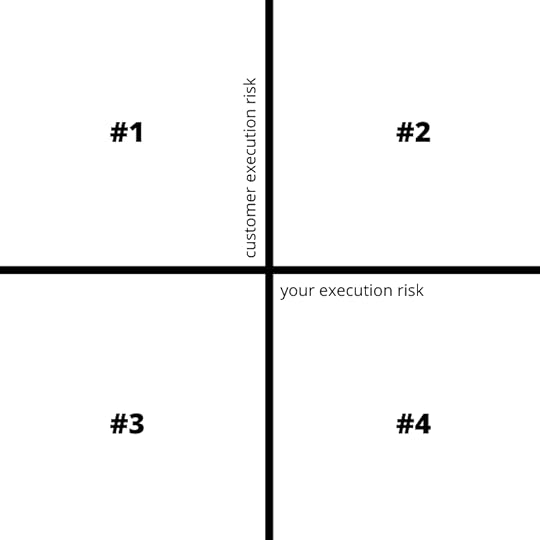
I have an easy method to evaluate your prospects in
order to strategize how to reduce risk to increase your chances of winning
their business.
I recommend that you create a risk profile for each
deal in your forecast.
Use a scale like the one in the Risk Assessment Quad below. In the RAQ the x-axis represents your execution risk if you win the deal. The y-axis represents the customer’s execution risk in giving you the order.
Let’s look at what types of deals we could find in
each quadrant.
Quadrant 1:
The customer wants a large quantity of your product to be delivered quickly. It would be a stretch for you to achieve this. You determine that the customer has the resources to deploy the product in the time frames they specify.
Quadrant 2:
The customer wants you to develop a customized version of your product to be delivered on an aggressive schedule. It would be a stretch for you to achieve this. And the customer needs you to deliver on schedule or they’ll miss their deadline with their customer.
Quadrant 3:
The customer has asked for bids for a small quantity of products to be installed in one location. The delivery requirements fall within your normal timeframes and the customer has the resources to deploy your products in the timeframe specified. Any support resources required will fall well within the support you normally provide to customers.
Quadrant 4:
The customer needs your product to integrate into a system they are delivering to their biggest customer. The required delivery schedule is not a problem for you. But if you don’t deliver on time your customer will miss their deadlines with their customer and be subject to financial penalties.
To start, map your entire current pipeline on an RAQ.
“What do I do with this information?”
Once a week, plot your deals on the Quad. Strategize a way to move as many of your forecast orders to the lower left quadrant (#3) as possible.
Your Action Items
Plot your entire current pipeline on the Risk Assessment Quadrant.Strategize how to reduce the scope of prospect orders in Quadrants 2 and 4.Repeat each week in sales meetings or one-on-one pipeline reviews.
The post New Customer Relationship Management appeared first on Andy Paul.
December 14, 2019
How Buying and Selling Have Changed and What It Means for You Every Time You Talk to A Prospect
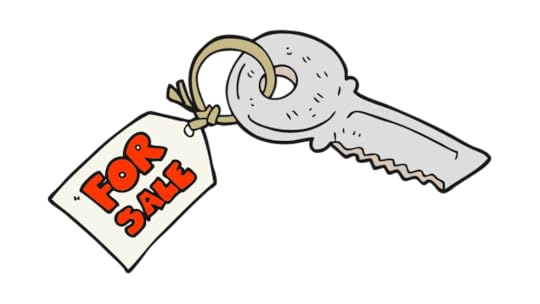
Quick Links:
What is Selling?Are YOU Selling or are THEY Buying?What the Successful Seller DoesThey Myth of Control in SellingWinning the Sale vs Winning the Order2 Tips to Create a Powerful First Perception
What is Selling?
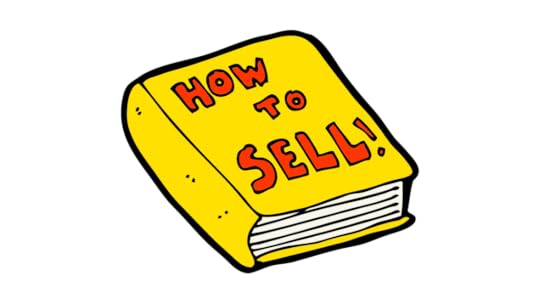
What is Selling?
‘What is Selling’ may seem like a question with a fairly obvious answer.
However, I ask it all the time of salespeople and I am always surprised at the variety of answers I get.
Ask 200 salespeople this question and you will likely receive 100 different answers. To me, this is a problem.
If salespeople truly don’t understand the purpose of what they are doing each day, then their ability to succeed at their job is compromised.
Salespeople alone are not to blame for this. They have probably
been mislead by their CEO and sales managers into thinking that sales is all
about taking orders.
Perhaps the easiest way to understand what Selling is, is to first agree on what it is not. Selling is NOT about:
Convincing customers to buy your product
Getting an order.
Earning commissions.
Selling is no more about getting an order than the ritualized Japanese Tea Ceremony is about drinking tea. Or that football is about scoring touchdowns. It is essential to not confuse the process with the results.
The beauty of the Japanese tea ceremony is in the sublimely perfect execution of the 25 steps it takes to produce a cup of tea, serve it to your guests and clean up afterwards. Football is about the consistent execution of a process, in this case called a play. The more perfect the execution of the play the more rewards are achieved in the form of touchdowns.
Selling is the same. It is a process. Selling is a process that
is fundamentally an exchange of time between the buyer and seller. At its
heart, Selling is the process by which the customer provides you, the seller,
with a certain amount of their time at each stage of their buying process to
learn about their requirements and provide to them information about the
features and value of your products and services. If you consistently provide
value to the prospect during the time they invest in you, they will continue to
invest more time in you until you have provided the information to enable them
to make an informed purchase decision Which results in or order for you.
For a salesperson, this means that you have to maintain a laser focus on how you can be completely responsive to a prospect or customer’s requirements for information.
In my book, Zero-Time Selling, I show how a salesperson can ensure that every customer interaction will achieve Maximum Impact in the Least Time (MILT). If you’re a salesperson or sales manager, this should be the conscious goal of your day-to-day sales activity. “How can I be completely responsive to the customer’s need for information?”
If you’re completely responsive to your customer’s information
requirements then you will realize the results that you desire:
Getting an order
Earning Commissions
Making customers productive and happy with your product/service
Getting repeat orders
Are You Selling or Are They Buying?
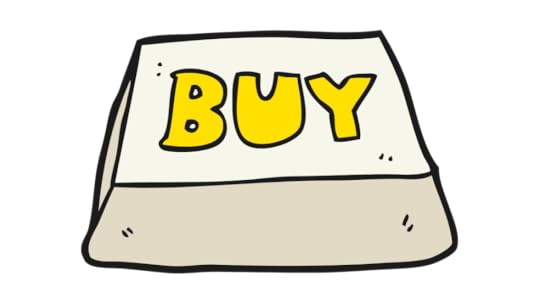
This is not a trick question.
Are you selling or is your customer
buying? The correct answer is both. There is both a sales cycle and a buying
cycle(s) occurring simultaneously on every sales opportunity.
Why is this important to you? Because the primary purpose of your sales cycle is to support your prospect’s buying process by helping them accomplish a single task: making a fully informed decision to purchase the right product or service for their needs.
If you, as a seller, can also empower them to make that purchase decision with the least investment of their time possible then you will have successfully created value for the buyer, laid the foundation for a trust-based relationship, and truly differentiated yourself from your competitors.
The Balance of Power has Shifted
In the olden days, in the dark ages of the pre-Internet world, buyers of products and services, otherwise known as your prospects, were completely dependent on you, the sales professional, for information about the products and services they wanted to buy.
There were no websites to search and very few reliable third-party sources of information about products and services that they could use to shape and guide their buying process. Prospects could only buy as fast as a seller was prepared or willing to supply the information they needed to take into consideration in order to make an optimal purchase decision.
Then the Internet upended that whole cozy arrangement. Experts estimate that prospects today gather 50-75% of data they need to make their decision before they engage with you, the seller, for first time. Now, the buyer is largely in charge of his or her own buying process. With one vital exception. That exception is the reason a prospect needs to work with a salesperson.
At the end of the day, after they have consumed all the public information about a product or service, the remaining data your prospect needs to gather in order to make their decision is generally available only from you, the seller.
Therefore, it seems a bit ironic that when sales cycles get stretched out salespeople will typically point their fingers at the buyer. To a seller it is always the customer who’s the culprit when the sales cycle stalls.
In fact, the opposite is true. It is nearly always the seller’s fault when the buyer stops making progress towards an order. Why? Because the seller didn’t provide the prospect with the information they needed to move on to the subsequent step in their buying process.
If a deal you are working on suddenly loses momentum, take a look in the mirror before you begin pointing fingers at your prospect. Do an honest assessment of your progress in the deal and quickly determine what data the customer needs from you in order to move to the next step of their buying cycle and get them back on track to giving you the order.
As a seller you must also
understand that there is a good chance that there will be more than one buying
cycle occurring simultaneously. Your prospect will have a separate buying
process for every seller in a competitive deal. This is extremely important for
you to keep in mind. If you can be completely responsive to your prospect’s
information requirements then you can gain a competitive advantage over your
competitors.
What the Successful Seller Does
The successful seller is the one
that most closely aligns their selling resources (i.e., their product knowledge
and industry expertise) with the buying needs (i.e., information requirements)
of their prospect to enable them to make the optimum informed decision in the
least time possible. This means that you have to place your resources with the
deepest product knowledge and industry expertise closer to the customer.
To help the prospect move through
their buying cycle in the shortest time you have to eliminate the “get-backs”
from your selling. Every time a salesperson can’t answer a prospect’s question
and says, “I’m sorry I’m going to have to get back to you” he or she is slowing
down the buying cycle. Having the right salespeople on your team who can be
completely responsive to the prospect’s need for information and help them move
through their buying cycle in Zero-Time will definitely enable you to win more
orders in less time.
The First Seller with the Answers Wins
A buying cycle is nothing more than
an organized search for information and data in the form of answers to
questions. How efficiently and effectively you convey that information to your
prospect will be the difference between getting an order and losing a customer.
The Myth of Control in Selling

Are you Walking the Dog or is the Dog Walking You?
There exists a touch of schizophrenia in some of the writing and
blogging on sales, sales improvement and sales training today. On one hand,
there is general agreement that the world has changed, that universally easy
access to information has shifted the balance of power in any sales transaction
from the seller to the customer, converting the old familiar sales cycle into
the buying cycle. Selling has become a “customer-oriented.”
And yet, on the other hand, there still remains a major emphasis
in selling today on the notion of controlling the sales process and controlling
your prospect and customers. (If you Google “controlling the sales process”
you’ll get 31,400,000 results.) However, there is perhaps no bigger myth in
sales today than that of a salesperson controlling the sales process or their
prospects.
Many companies and salespeople still nominally employ the
traditional “control-oriented” sales model today. It is easy to understand why
people gravitate towards this approach to selling. Being in “control” is
comforting. It is a hard habit for sales managers and salespeople to break.
Even though it doesn’t work.
I like to believe that I am in control when I’m taking my dogs
for a walk. Unless they decide that a compelling new smell emanating from the
bushes demands to be investigated. Or some yappy purse dogs straining on their
leashes in the opposite direction on the other side of the street need to be
greeted and sniffed from stem to stern. Like prospects, my dogs indulge my need
to appear to be in control.
Paradoxically, the primary tactic a salesperson often employs in a vain effort to control the sales process centers on controlling and metering the flow of information to the prospect.
Rather than helping the salesperson with his or her control issues, the prospect experiences this absence of information as poor responsiveness and poor sales service. Whatever advantage the salesperson had hoped to gain by “controlling the prospect,” he or she will have lost.
This approach is the exact opposite of how effective sellers
today are using responsiveness, content and speed as competitive advantages to
help the buyer make an informed purchased decision in the least time possible.
Notice the emphasis on “helping the buyer.” Selling must be a service
in support of the buyer. And service, by definition, is about giving, not
holding back.
Rather than making life harder for salespeople, openly
relinquishing any claim to controlling the sales process and the prospect frees
a salesperson to develop more effective ways to create value for the customer
and differentiate their product and company through how they sell.
Acknowledging that you are not in control of the prospect forces
you to focus on your prospect’s requirements, specifically in terms of the
information they must have to make an informed purchase decision. And, how you
can meet their needs by using the resources that actually are under your
control to sell with the maximum impact in the least time possible to win more
orders in less time.
Are
You Trying to Win the Sale or Win the Order?

There is a lot to be said for taking a long-term perspective in
sales. Deals can often take a long time to come to fruition as you work with
the prospect to provide the information they require to move through their
buying process and make an informed purchase decision. But if you are too
focused on winning the order you may end up losing the sale.
Here is something that most sales training doesn’t teach you:
your prospects make up their minds which seller they are going to buy from
fairly early in their buying process, often long before they hand out an order.
That seller has won the sale. If they can shepherd the prospect through the
rest of their buying process without tripping over their tongues or making some
obvious error the order will be theirs. To use the old sales cliche, the
business is theirs to lose.
Unfortunately, short of the prospect telling you, there is no
way to know with 100% certainty whether you have won the sale or not. Over time
your experiences and expertise will blend to give you a reliable intuitive
indicator of where you stand. But even then the only way to proceed is to act
as if every prospect were going to make up their mind on the first call.
How would you win the sale on the first call?
The treasure trove of information available on the Internet means that prospects are now largely pre-educated and somewhat self-qualified before they ever contact a seller.
Experts estimate that prospects have progressed through 50%-75% of their buying cycle before they contact you for the first time. This means that your prospects have a narrower range of information they need answered when you finally connect and their need for information in order to make the best purchased decision is urgent.
The key to winning the sale on the first call is to create a powerful first perception with the prospect. You might be wondering if I meant to say “first impression” instead of “first perception” and my answer is no. To me a first impression means the prospect has some vague notion of who you are, what you do and how you do it.
A first perception, on the other hand, is an immediate recognition and appreciation on the part of the prospect of the value that you can create for them. Impressions are fleeting.
Perceptions are sticky. Perception is reality. Create a compelling first perception with the prospect and they immediately begin to associate their pre-sales experience with you to what it would be like to work with you and your company after the order. Once the prospect takes that mental step then you have won the sale.
How Can You Create a Powerful First Perception?
Two tips:
Sell with Maximum Impact in the Least Time. Plan each sales interaction with the prospect to create value for the prospect and to maximize the return they receive from the time they invest in you.
Be Completely Responsive. The race doesn’t go to the swift. It goes to the responsive. If you assume your prospect is pre-educated before you talk with them, then being completely responsive means quickly providing complete answers to the remaining questions they have. Being fast without content is not responsive. Your prospects have questions and the first seller with the answers wins.
It can take a long time to get an order. But it doesn’t take
long at all to win the sale.
The post How Buying and Selling Have Changed and What It Means for You Every Time You Talk to A Prospect appeared first on Andy Paul.
December 13, 2019
Tips to Turn Your Attitude into Orders

Not long ago I read a blog posting about the
art of the follow-up. I liked the general concept presented by the author, that
there are skills we can all learn that will improve the effectiveness of our
sales follow-up. It was hard to argue with his premise.
He assumes, of course, that there’s something
to follow up on. And this is what
trips up many sellers. Before you can follow
up on a lead, you have to pick up the phone and establish first contact
with a prospect.
I have read studies and statistics about sales follow-up that are uniformly depressing. Somewhere between 40% and 80% of leads are never followed up (depending on which source you believe).
(Personally, I think that anything above 0% is a failure of management, but I’ll leave that for another rant.)
No matter which end of the statistical spectrum you subscribe to, the bottom line is that follow-up suffers more from inattention than from ineffectiveness.
To frame this in an even grimmer light, seminal studies, such as the Insidesales.com/MIT Lead Response Management Study, unequivocally demonstrate that it is not enough to simply follow up. Effectiveness of follow-up is directly tied to how quickly follow-up occurs.
The conclusion of the MIT study is stunningly self-evident, but its lessons are blithely ignored by the vast majority of sellers. The study found that the longer you take to follow-up a lead, the less likely you are to ever contact the prospect. In short, any interest a prospect has in talking to you quickly diminishes once they have reached out to you.
Therefore, the central issue in effective
follow up is attitudinal. A seller simply has to commit to take action.
Quickly. Put aside thoughts of technique until you take an action that would
benefit from it.
With clients I like to use the term
“equivalence” to describe how they should treat follow-up. Ask
yourself this question: how do you want a seller to follow up with you? If you
are interested in a company’s products and you submit an inquiry, what are your
expectations for follow-up? You must have some expectation that the company
will get back to you or you wouldn’t have expressed interest in their
products. Apply an equivalent
expectation to your own, or your sales team’s, follow-up efforts.
As I prepared to publish and promote my first book, Zero-Time Selling, I decided to accelerate my learning curve by hiring an experienced consultant who could help me bring it to market with a bang.
I attended conferences on book marketing and met with book marketing experts considered to be luminaries in their field. I had the book and the budget to hire the right resource.
I met first with Luminary #1, who loved the idea of my book and was excited to talk in more depth about how she could help me. We set a time for a follow-up phone call. She never called and never followed up.
Luminary #2 was also interested in helping me get my book to market, and his follow up was as nonexistent as his counterpart’s. However, he did take my card and was thoughtful enough to add my name a dozen of his mailing lists, from which I had to unsubscribe.
In follow-up, attitude precedes art, just as
form follows function.
I recently searched online for price information about a particular SaaS application that I wanted to use for my business. The vendor offered up only two service options on its website:
Professional (Individual)Enterprise.
The company’s website contained no pricing information for either option and no way to purchase the product. I completed an online form asking for pricing information. Two weeks later I got an email response from a sales manager stating that if I wanted price information I had to set up a phone call with her to go over my requirements. Two weeks. In the meantime, I had purchased an alternative solution.
The art of follow-up is less important than the
act of follow-up. Commit to being in the game first and then work on your
craft.
Key Takeaway: Follow-up technique is less important than “just doing it.”

Perfect Your Follow-up on Sales Leads
In
any business, every inbound sales lead has the potential not only to become an
order, but also to be transformed into a satisfied customer that provides a
dependable stream of repeat revenue year after year.
The primary obstacle preventing a seller from converting an inbound sales lead into a repeat customer is the simple act of lead follow-up. On the surface, lead follow-up would appear to be straightforward. but most companies seem to find it difficult.
Industry research on sales estimates that 40–50% of all inbound sales leads are never followed up. And, when the leads are followed up, the seller unwittingly makes mistakes that cause him to lose the sale.
Comprehensive
and effective sales lead follow-up is a simple step that every company can take
to build prospect pipelines and grow sales without increasing headcount.
To
develop an effective lead follow-up process it is important to first understand
what an inbound sales lead is. A sales lead is simply someone who asks a
question: What does your product do? How does it do it? Will it do what I need?
What does it cost? And the first seller with the answers wins.
Here
are the essential steps that every seller should take to be the first with the
answers and to maximize the conversion of inbound sales leads into orders.
1. Follow up on 100% of inbound sales leads
Every
inbound sales lead is like a scratch-off lottery ticket. You don’t know what
you have until you scratch the wax off the face of it and see what you’ve won.
How many people buy a lottery ticket and then wait until the next day to see if
they have a winner? None. Inbound sales leads should be treated the same way.
Make
sure that all inbound sales leads are entered into your CRM system as soon as
they are received and that each one is assigned to a salesperson for immediate
follow-up. Use your CRM system every day to verify that 100% of your sales
leads are being followed up. If you aren’t checking, it isn’t happening.
2. Follow up all leads in less than 60 minutes
How
much time should it take to follow up a lead? Less than you think. Research has
found that you are 7 times more likely to qualify a lead if the follow-up
occurs in less than an hour. Think how many more prospects will move into your
pipeline if you respond to 100% of your leads in an hour or less.
Leads
have a short shelf-life. For every minute that follow-up is delayed or deferred
its value drops. And if your competitors swoop in with answers while you’re
sitting on your hands, then you’re suddenly fighting for second place.
I
worked with one client to streamline lead follow-up and reduce the company’s
response time to inbound sales leads from 24 hours to 30 minutes. The immediate
result was more qualified prospects in the pipeline. The longer-term result was
a doubling of sales with the same number of salespeople.
3. Provide complete answers quickly
As
noted above, an inbound sales lead is nothing more than a question. Being
responsive to a prospect means providing a complete answer to their question(s)
in the least time possible. The best way to do this is to position your deepest
product knowledge (your most knowledgeable salespeople) closest to the
customer. It is not enough to be the first to respond to the customer. You must
also be the first to answer their questions. The first seller to respond to an
inbound sales lead with the complete answer in Zero-Time will build trust and
credibility and dramatically increase their chances of winning the order.
4. Measure, improve, and measure again
You
must continually work to improve your sales lead follow-up process. As the old
saying goes, ‘You can’t improve what you don’t measure.’ So keep it simple to
start with and measure the following:
How many sales leads do you receive each week?
How long does it take to respond to each sales lead (the amount of time between receipt of a lead until a salesperson talks to the prospect for the first time)?
What percentage of your inbound sales leads are converted into qualified prospects?
What percentage of your inbound sales leads are converted into orders?
Set goals for these metrics and then check each month to see if you are achieving them. If you are, set new, more aggressive goals and fine-tune each element of your lead follow- up process to achieve the new goal.
If you aren’t meeting your goals, examine each element of your process in detail and implement steps you can take to improve it. Then check your performance again in a month.
Key
Takeaway: Develop a written follow-up
process. Follow it.

In follow-up, being responsive to your prospect is faster than being first to respond.
You
may think that I’m just playing with words here. But read on and you’ll find
that the power of this statement lies in its execution, not its elocution.
What
does it mean to be responsive? First, let me tell you what it doesn’t mean.
“Responsive” doesn’t mean fast.
Responsiveness in selling has two inseparable elements: information content and speed. Take away one element and you are no longer responsive.
Imagine that responsiveness is a molecule like H2O composed of two elements; hydrogen and oxygen. Take away the H2 (two hydrogen atoms) and you just have O (oxygen.) That’s great for breathing, but it’s not much use in the thirst-quenching category.
Similarly, if you’re fast to respond to your prospects but can’t give them the data and information they need to move forward in their buying process, then you’re not being responsive. Being fast is good way to earn gold medals, but in sales speed is not a virtue if you provide no content.
Your responsiveness, or lack thereof, is your prospect’s first experience with your company. The initial interaction you have with a prospect or customer is judged to be a win or a loss. What do you want the prospect’s first perception of you, your product, and your company to be?
Love at first sight?
Who ever loved, that loved not at first sight?
Christopher Marlowe
Or contempt?
Contempt is as frequently produced at first sight as love.
Herman Melville
Responsiveness
is an absolute value. You either are
responsive or you’re not. You can’t be partially responsive. Customers are
acutely aware of responsiveness in sales. Unfortunately they aren’t on the
receiving end of it very often.
For
a seller, responsiveness becomes a key competitive advantage in a
commodity-oriented world. Your first sales call tells customers what it would
be like to work with your company. If you help your customer complete the
buying cycle quickly and efficiently, they will begin to expect this level of
responsiveness from all companies. The competitors that don’t measure up will
find themselves at a distinct disadvantage.
Key
Takeaway: Be responsive. Speed helps too.
Instill a culture of absolute responsiveness in your selling
1. Make responsiveness a priority
Everyone who engages with the customer should be trained to provide sales service and responsiveness that compress the customer’s buying cycle.
2. Create metrics for your key sales processes
Set a time limit for responding to a sales lead. Set a time limit for responding to 100% of your sales leads. If you aren’t measuring it, it isn’t happening.
3. Sell with the sharp end of the stick
Put your salespeople with the deepest product knowledge closest to the point of attack— that is, closest to the customer. A customer’s buying process is a search for information to help them make a purchase decision. If your front-line sales people can quickly provide the answers the prospect requires, then your responsiveness will skyrocket.
4. Map your content to the prospect’s buying process
Unless you are selling a brand new product, you should know what content the prospect requires at each stage of the buying cycle to move forward to the next stage. This content has to be in a form that is quickly and easily shared with your prospects.
5. Manage to the metrics
The metrics, and the individual performances against them, have to be reviewed daily. Your CRM system is a perfect tool for tracking and managing responsiveness.
There
is an epidemic of poor responsiveness in sales. Some of it is laziness. Some is
due to inattentiveness on the part of management. Most often, poor
responsiveness is due to a lack of understanding about how important first
impressions are in your ability to win a prospect’s business. If you value
responsiveness, that will quickly become apparent to your prospect and set you
apart from your competitors.
You only have one chance to make a good first impression.
Lois (my mom)

What are your sales biases? And how are they slowing your follow-up?
Consider
this situation. An experienced salesperson who had been hitting his numbers,
and who was considered to have lots of potential, suddenly stops improving. A
year later he has gone from being an up-and-comer to someone who is struggling.
Throughout this period you have been coaching him to see if you can get him
back on track. Somewhat mysteriously, he didn’t seem to be doing anything
differently or wrong. And yet, there he was. Stuck.
One reason salespeople stop improving and start struggling is that they start believing they know what they’re doing. What? Yes, oddly, experience can be the downfall of a salesperson.
The salesperson who believes she has it all figured out thinks the path to success is to keep doing things the same way. But your prospects and customers operate in a world that is constantly evolving. They are changing their requirements and behaviors in response to the changing environment. The salesperson with a static worldview will suddenly find herself on the outside looking in.
This salesperson has developed an experience, or sales, bias. The dictionary says that a bias is “the inclination to present or hold a partial perspective at the expense of (possibly valid) alternatives.” In this case, the biased salesperson assumes that all customers for her product have the same requirements, evaluate products in the same way, make decisions in the same fashion, and can be sold in the same manner.
Experience-based bias affects outcomes in other fields as well. My wife is a medical educator and recently attended a workshop discussion about doctors’ biases. Researchers had identified 125 possible biases, predispositions if you will, that doctors unconsciously use while evaluating and diagnosing patients. When you are sick and visit a doctor, the physician will, based on his or her accumulated experiences with previous patients, pass your words and symptoms through the filter of 125 biases before arriving at a diagnosis.
A story was recounted of a physician whose standard response to any patient with a certain set of symptoms was to say, “Oh, when they say that they are always lying.”
The impact of these biases can be deadly if life-threatening problems are overlooked and go undiagnosed.
Although selling is not as life-changing as medicine, the problem of experience bias is real. How about this perennial sales bias? “Those are bad leads. I can tell just by looking at them.” Or, how about this classic sales bias: “I never trust a lead that I didn’t develop myself.”
Sales
biases can become absolutes in the mind of the seller. To make sure that you
aren’t being slowed down by your experiences, you must continually fight your
biases. Use your experience as a platform to build on. Treat every sales
situation as a new learning opportunity instead of as a summer repeat of a
sitcom episode.
Key Takeaway: Don’t let your sales biases
blind you to valuable opportunities
The post Tips to Turn Your Attitude into Orders appeared first on Andy Paul.
December 12, 2019
How To Be Your Own Sales Consultant

You don’t need to hire an expensive outsider to help you jump-start your sales.
All sales leaders have experienced a sales
slump. It comes with the territory.
Sales growth has stalled out. It’s a struggle
to achieve your number. You seemed to have lost the recipe.
Sometimes things turn around quickly all on
their own. Usually they don’t. Action needs to be taken. Now.
Often the impulse is to hire a sales
consultant. The thinking behind this usually has to do with getting an
“objective 3rd party opinion” about what your problems are and what can be done
to fix them.
Sometimes that is the right answer. I’d
estimate in about 10% of the cases the challenges are complex enough to bring
in an expert to help you.
However, in most instances, you can become
your own sales consultant to objectively assess and diagnose your challenges
and come up with a plan to address them. It’s easier than you think.
I’ve developed a process I call the 5-Day Sales Fix to get things moving the right direction. Fast.
It involves a modest amount of preparation.
And a full week of your time.
Here’s how it works:
You are going to devote one work-week to do a
deep dive assessment of your sales efforts the way a competent sales consultant
would. Each day you will tackle a specific task.
At the end of the week you’ll have created a
one-page sales plan that you can use as your road map for acceleration.
Following this intensive week you will invest
one hour per day on maintaining and extending your “outsider’s” perspective.
Ready?
Day 1 – MONDAY: Talk to your customers

RULE #1: The solutions to your sales problems are never found in the office.
The best way to assess your sales effort with any degree of accuracy is to talk with your customers first.
Task:
Have a conversation with 8 current customers.
Do it all on Monday. One call scheduled per hour.Book 30 minutes for each call. They are unlikely to last that long but reserve the time just in case.If your customers are in your local geographic area, then schedule some in office visits with them.Otherwise, these calls should all be conducted with video using a tool such as Zoom, Go To Meeting or Skype.Ask the customers if you can record the call for training purposes. (Then have the conversations transcribed afterwards.)Be sure to the ultimate decision maker.Tell them in advance what questions you are going to ask. There is no reason for surprises.
Questions For Current Customers:
Why did you buy from us? What was your buying experience like with our sales team? What did our team do well? What do we need to improve?What business value have you received from using your product? How could we have helped shorten your decision cycle? Are you planning to continue to buy from us? If not, why not? If you had to do it all over, would you buy from us again? Would you serve as a reference for future customers? Do you have any challenges that we can help you with now?
Questions You’ll Answer:
Do we truly have a product market fit?Is our sales team selling to prospects that fit your ICP?Do buyers believe that our sales team possesses the relevant skills and knowledge to help them make good decisions quickly?What is the buying experience is like with our team and how it can be improved?
Day 2 – TUESDAY: Talk to former customers and lost prospects

RULE
#2: There are details about your sales performance you can learn only from
deals you didn’t win.
Task:
Have conversations with 4 former prospects (that did not buy from you) and 4
former customers that no longer buy from you.
Do it all on Tuesday. One call
scheduled per hour.Book 30 minutes for each call.
They are unlikely to last that long but reserve the time just in case.These calls should all be
conducted with video using a tool such as Zoom, Go To Meeting or Skype.Ask the customers if you can
record the call for training purposes. (Then have the conversations transcribed
afterwards.)Talk to the ultimate decision
maker. Tell them in advance what questions you are going to ask. There is no
reason for surprises.
Questions for Prospects That Did NOT Buy From You:
Why did you decide to buy from a competitor? What was your buying experience like with our sales team? What did our team do well? What needs to be improved in the buying experience that would make a difference in the outcome? If you did it all over again, what would we need to do to win?
Questions For Ex-Customers That Switches To A Competitor:
Why did you decide to switch away from us? Did we fail to deliver the features and value we promised? Did you talk with our sales team prior to making decision? If not, why not? If yes, what happened? What could we have done that would have made a difference in the outcome? Would you be willing to work with us again in the future?
Questions You’ll Answer:
Do we truly have a product market fit?Is our sales team selling to prospects that fit your ICP?Do buyers believe that our sales team possesses the relevant skills and knowledge to help them make good decisions quickly?How could the buying experience with our team be improved?
Day 3 – WEDNESDAY: Assess your sales team

RULE
#3: Success depends on the right alignment values, skills & habits.
Assessing
your sales team is not just a single step
strategy. There are multiple components
to assessing a sales team recommended by the experts.
Perform formal assessments of your team’s capabilities.Assess and evaluate existing sales people as if they were new candidates for the roleDetermine which sellers are “keepers” and which sales reps will need to continue their careers elsewhere.Fine-tune the requirements for each position on your sales team.
Assessing your Sales Team
Have each team member (sellers and managers) take a sales aptitude assessment. Use standard off-the-shelf assessment.Redefine or fine-tune the job specification for each sales position. What are the must-have skills, knowledge and expertise?Interview each team member. This is not a coaching session. Discover what each person aspires to achieve, what their personal and professional goals are and where they believe they need to improve.
Ask These 4 Questions In The Individual Interviews With Your Sales Team:
What is the big dream in your life that you are working for? Why?If you could change one thing about yourself to improve your capabilities, what would it be and what would you do?If a new boss took my place, what 2 pieces of advice would you give them about how to help improve your sales and the company’s sales?How can I help you accelerate your career?
Questions You’ll Answer:
Do the skills and knowledge of our sales team align with the needs of the buyer?Have we defined our sales roles appropriately and do we have the right people in them?What are the educational gaps that need to be filled on our team?Do we have the right management team and structure in place?
Day 4 – THURSDAY: Analyze Your Sales Process & Performance

RULE
#4: A solid sales process won’t win you deals. but a poor sales process can
certainly cause you to lose deals.
Steps to Analyze Your Process & Performance
Document your current sales process. Write it down step by step. Review prospecting and lead gen activities. Are you generating enough prospects or do you have a lead deficit? What are the 2 KPIs used to monitor your overall sales process. Do they correlate to success? What are the 2 key metrics used to monitor and measure individual performance. Do they correlate to success? Review account/territory assignments. Review commission plan, incentives and quota assignments. Update your qualification criteria based on your customer conversations. Review your pipeline. Remove the 50% that are bad prospects. Review all sales management processes.
Ask These 4 Questions In Your Assessment Of Your Sales Process:
Are we measuring activities or outcomes?Do the activities we measure directly correlate to the outcomes we seek?Are we equitably distributing accounts (and leads) or are they disproportionately allocated to top producers?Does our incentive compensation plan align with and motivate the desired behaviors and outcomes from our sales team?
Questions You’ll Answer:
Does our process align with how our customers want to buy?Are we using relevant data and metrics to measure sales performance? Is our sales process helping or hindering sales performance?What changes do we need to make to our sales process?
Day 5 – Friday: Write your 1-Page Sales Plan

RULE
#5: There’s nothing wrong with sales that an order won’t fix.
Task:
Analyze gathered data and create simple 1-Page sales plan
Your 1-Page Sales Plan:
Define new 90-day objectives for team Define a max of two (2) key strategies and tactics for 90 day plan period (focused on adding new opportunities into the pipeline and closing existing prospects) Define achievable 90-day objectives for all individual sales people (these are not stretch goals) Define a daily 1:1 sales coaching process and schedule Define individual learning plans for each sales person Eliminate all external and internal dependencies (such as new product availability or economy improving) Define inter-departmental resources required to support the 90-day goal.
Details:
New short-term team goalsFocus on maximum of two strategies to hit 90 day goalsFocus on achieving successes in short-term with qualified opportunities already in the pipeline.New short-term objectives for all sellers (to jump start individual success)Emphasis placed on daily coaching of all sales reps.Make immediate decisions on sales reps that are not a fit.Normalize policies on lead distribution and account allocation.Immediately implement individual learning plans to up-skill sales reps and managers.
FOLLOW UP: 5 hours each week during the 90-day plan period
During the plan period it’s essential that you
don’t stop the activities you performed to analyze your team. Don’t fall behind
again. Stay on top of your customers, your selling and your people.
Here’s your hourly plan for each day of the
week during the 90-days.
Monday: Talk to your customers
Every Monday set aside one hour to talk with two customers (or preferably meet
them in person).
Tuesday: Talk to lost prospects
Every Tuesday set aside one hour to talk with two prospects that you lost or two
customers that no longer buy from you.
Wednesday: Assess your team
Every Wednesday set aside one hour for 2x 30 minute conversations with individual
sales people.
Thursday: Analyze your sales performance & process
Every Thursday set aside one hour to review individual performance of sales people
and sales managers.
Friday: Review progress against 90-day plan goals
Every Friday set aside one hour to review KPIs for the 90-day plan and adjust
your strategies and process as required.
NOTE:
Execute this plan and you’ll create valuable momentum that will get you back on track and headed in the right direction.
However, it’s not meant to be a comprehensive
overhaul and transformation of your sales efforts. That takes more time. And,
quite frankly, initially that can be pretty disruptive to your sales efforts.
I recommend that you start with this
jump-start program. Rebuild the confidence of your sales team in its ability to
execute. Then start a longer-term program to build a high-performing sales
team.
That type of effort is more complex and likely
will require a consultant to help you.
The post How To Be Your Own Sales Consultant appeared first on Andy Paul.
Andy Paul's Blog
- Andy Paul's profile
- 4 followers



